COUNTRY MATTERS 2019

Editors: Mark Lewis, Marlise Jolliffe
Proof Readers: Richard Miller, Marilyn Wright

Artwork: Shaun Hodge, Emma Hawker
Show/Farm Sale photos: Rob Nolan
Cover photo:: Immy Robinson
Printed by: Remous Ltd, Glovers Close, Milborne Port, Dorset DT9 5EP tel: 01963 250920 www.remous.com
The contents of this publication are intended as guidance and general interest. It does not constitute legal advice and can be no substitute for considered advice on specific problems. Although every effort has been made to ensure the accuracy of the information printed in this publication, Symonds & Sampson LLP cannot accept liability for errors and omissions. The views expressed in this publication are not necessarily those of Symonds & Sampson LLP.

WELCOME WELCOME
"The times they are a-changin’,” sang Bob Dylan in 1964 and it is an equally poignant lyric today. At Symonds & Sampson, we don’t fear change. Across the decades, we may have lost sections of business that have been good, but invariably we have replaced them with business that has been great.
Change is inevitable and, while it can be disruptive in the short term, forward planning and strong leadership means that stability soon returns. We, of course, need time to learn the details of new legislation and how we can then disseminate this information and advise people, but we have always built our business on expert, up-to-date knowledge and acted consistently and constantly with the best interests of our clients at heart.
You will note that we are featuring our canine companions throughout the magazine by likening their characteristics to our profession. It has been said you can’t teach an old dog new tricks (which in my case is probably true) but Symonds & Sampson now has a large number of young professionals (highlighted on pages 12–13) across our offices and they bring energy, enthusiasm and passion, which can be infectious. Getting this blend of talent and putting it alongside more experienced professionals provides a link through the generations, which makes us a very strong force moving forward.
There are always challenges ahead of us but Symonds & Sampson continues to diversify and we now incorporate a broad base of agricultural, residential and commercial chartered surveyors, estate and letting agents, development and planning experts, architects, auctioneers and valuers – and this make us a robust, rounded and almost unique firm.

When you read through the magazine, you will see how we all work, rest and play but also find time for fundraising for our chosen charities. In 2019 we will be supporting Southampton hospital’s Wessex Heartbeat, and Bournemouth Hospital Charity as both these wonderful NHS facilities have brought me through a very difficult 2018. I hope you will feel able to dig deeply for these very worthwhile causes and we will, of course, hold various events across our region in the coming 12 months to support them.
Enjoy the magazine, which we hope provides enjoyable and educational reading for everyone, and we look forward to working with you throughout the coming year.
3
Andrew Robinson BSc FRICS FAAV Senior Partner
Friendly and hard working, warm and intelligent you’ll be hard pushed to beat the work ethic of our Professional team. People oriented and bred for demanding situations, like the Labrador, we’re indispensable working companions.
Watch us negotiating every terrain, we’re the leaders of the pack.

Labrador
PROFESSIONAL
On these pages you’ll find trusted advice on valuations, all you need to know about pre-contract protocol, and how you could be in line for a utility company pay-out. Why ‘home is where the art is’ for one of our managers, the legacy of the Ernest Cook Trust, and a word from our young professionals. And don’t miss our guide to removing agricultural occupancy conditions – it could be well worth your while.
PLANNING AND DEVELOPMENT
Smart ideas to help your farm make extra money –from holiday cottages and glamping sites, to music festivals and marriage venues. How our region’s farmers have churned a profit from ice-cream. The National Planning Policy Framework explained. Plus, planning for your pooch – how to keep your dog healthy, and how to choose a puppy for field trials.
How Much?
Inheritance Tax planning and probate valuations

When it comes to a farmer’s valuation for probate, the main objective is to maximise the claim for Agricultural Property Relief (APR). To do this, it is first essential to establish the facts about the use, occupation and ownership of the different property elements.
HMRC will usually seek to reduce the APR claim where dwellings are concerned or where there is land or buildings with ‘hope value’ for development.
District valuers will seek to rely on case law in particular to argue the non-agricultural element of market value to which Inheritance Tax (IHT) can then be levied. The starting point will usually be 30% in respect of dwellings, but this apportionment is not set in stone and there is a range of issues that need to be considered and negotiated.
Therefore, apart from the valuer’s role in preparing the valuation for the executors' IHT return, he or she is also able to argue valuation evidence and consider the influence or contribution made by hope or development value and the available grounds for minimising the district valuer’s position in relation to APR.
The arguments are underpinned by good valuation evidence, clear understanding of the application of case law and careful fact-gathering in respect of the deceased and his or her agricultural business and property ownership structures.
Bank valuations
Professional valuations are always needed by banks and other lending institutions in connection with secured lending arrangements. As valuers for lenders, we are required to report on a range of matters apart from the market value. This includes planning and development matters, the impact of title restrictions and covenants, contamination, property condition, tenancy and rental factors. An opinion of the reinstatement value for insurance purposes is also frequently required. All of these factors underpin the valuer’s conclusion about the capital and rental values that the lending body can rely on.
Capital Gains Tax valuations
The liability for Capital Gains Tax (CGT) can arise in a number of instances including the disposal of farmland and property. In property that has been long-owned by the party disposing of it, there is frequently a need to establish the value at the CGT base date of 31 March 1982 and to provide an apportionment of value then and at the date of sale between the main residence and the land and buildings that make up the farm or estate.
Apportionment is needed because the main dwelling is likely to be the client’s principal private residence and, therefore, exempt from CGT, together with a standard permitted area of land, typically garden, of 1.25 acres.
The remainder may be subject to CGT but could potentially benefit from the availability of entrepreneur’s relief in the case of a qualifying business, and rollover relief where development proceeds are reinvested in farmland.

Many costs can also be deducted, including repairs and improvements, management costs and sale expenses on production of evidence. The valuer’s expertise is in establishing the 1982 base value through careful analysis of contemporary evidence and in apportioning the present-day sale value to seek the most advantageous outcome for the client.
Matrimonial valuations
We are often asked to value property for solicitors and tribunals in cases of matrimonial breakdown where the value and division of assets is in dispute. Other property valuation disputes can centre around the dissolution of business partnerships, family inheritance disagreements, and landlord and tenant matters. In these cases we are often instructed in the capacity of an Expert Witness to provide advice and may be required to give evidence in court or other tribunal to assist the judge or arbitrator in reaching a decision.
Patrick Woodford, Partner and Head of Valuations, explains the many and varied roles of the professional valuer
Patrick
Woodford Poundbury 01305 236573 pwoodford@symondsandsampson.co.uk 6
Negotiation Skills
Pollard
Acouple of years ago, I reported on a development site where I had been acting on behalf of a client in an option agreement with a developer trying to obtain planning consent for a significant number of houses. I left the article at the point at which planning consent had been granted, but before the negotiations for the sale of the site had commenced.
We were ecstatic at getting the planning consent but our joy quickly turned to bemusement and bewilderment when the developer, having employed a specialist valuer from a national firm of land agents, told us that the site was worth less than the agreed minimum value but, nevertheless, would be prepared to offer that sum. The minimum value was about one quarter of my own assessment of the value of the site and, therefore, many millions short of our expectations.
That approach seemed to set a new tone for our relationship with the developer. Having had an excellent relationship throughout the sales process, our association deteriorated because they were clearly being less than open in the negotiation process and appeared to be trying to buy the site for a knock-down price.
They already had the right to buy the site at a discount through the option process, but they also wanted to get, what I would describe as, a double discount by buying the site at significantly below market value and, as you can imagine, that did not bode well for negotiations.
So, what did we do? The first thing I did was to tell them that, if they were only able to offer us the minimum price, they clearly had not fulfilled their obligations under the terms of the option agreement. This stated that they were obliged to maximise the development value of the site and I, therefore, put them on notice that they were not able to exercise their option agreement because they had failed in their duties to the landowner.
It was imperative to take some specialist valuation and legal advice to assist my client in the negotiation process because it was quite clear that they were trying to use every trick in the book to reduce the price.
As you can imagine, telling them that they were not able to exercise their option caused some angst, but I advised my client that, because of the actions of the developer, he had no option but to invest some of the proceeds from the option into the looming dispute.
The negotiations became bitter, protracted and we ended up at a mediation hearing where, after some relatively unpleasant but productive negotiations, we reached a settlement. The resulting deal agreed was, interestingly enough, three times the minimum price, and therefore only a relatively small amount below my initial appraisal on behalf of my client.
I have been involved with the sale of a number of development sites in the last two years and I have been able to review whether there is any benefit in using a promotion agreement in preference to an option agreement. My view is that both systems have their benefits and problems, but it is often what suits you. You can achieve a very good result in terms of gaining development premiums for your land.


However there is yet another elephant coming into the room and that is the threat of compulsory purchase of land to deliver much-needed housing. All we can do is to watch what is happening, but the government is looking at radical ways in which it could potentially deliver the housing land required for providing homes in this country.
I will look forward to the negotiations!
Philip
finds
that when it comes to selling development
sites,
the devil’s in the detail
Philip Pollard Salisbury 01722 334323 ppollard@symondsandsampson.co.uk
It was quite clear that they were trying to use every trick in the book to reduce the price
7
Pre-contract Enquiries
Buying and selling property can often be a stressful process. If you have ever been involved in the sale of a property you will have come across pre-contract enquiries – questions raised by the buyer’s solicitor with a view to obtaining additional information about the property during the conveyancing process.
They are initially raised in a standard format with additional and more specific questions following, designed to present a complete picture of the property and highlight any potential issues.
The completion of these forms is often seen by sellers as dull, tedious and frankly a waste of time. However, great care should be taken to ensure that the information provided is not a misrepresentation. In basic terms, misrepresentation can arise if:
• The seller has made a representation of fact or law (although is not aware that it is given as an opinion).
• The buyer has relied on that representation when deciding to enter into the contract.
• The representation was false at the time of the contract.
• The buyer has suffered loss as a result of entering into the contract.
If misrepresentation is proven, a buyer could cancel the contract and/or claim damages from the seller.

The depth of information required can vary considerably. For example, standard residential enquiry forms can run to around 16 pages, commercial and agricultural to as many as 55 pages, but each requires the same integrity and attention given, to ensure misrepresentation does not occur.
Most common examples of where buyers can be significantly disadvantaged can include boundaries/boundary features, alterations or additions such as solar panels, planning and building control, environmental issues, the presence of asbestos, and guarantees such as dry rot.
There are three forms of misrepresentation: fraudulent, negligent and innocent, and the remedies vary accordingly.
In one particular case, the High Court held that a landlord fraudulently stated that it was not aware of the existence of dry rot in the property, despite the fact that it had already carried out extensive works to remove dry rot and subsequently disclosed this fact. Even though the tenant had commissioned a full survey and ignored advice to investigate the existence of dry rot, the court held that as the tenant had relied on the misrepresentation, they would be entitled to relief in this instance.
In answering pre-contract enquiries, it is critically important to follow these simple steps:

• Make sure that the replies given are given accurately.
• Make sure the replies reflect your knowledge on the date they are given, noting that you are required to make reasonable efforts to check and verify the information you have provided.
• Tell the buyer immediately if information changes before contracts are exchanged.


It is not safe to simply say: “Not to the seller’s knowledge” as this infers that reasonable steps had been taken to discover the correct answer, leaving you at risk of misrepresentation if no such steps have actually been taken.
In all cases therefore, it is not just a matter of ‘caveat emptor’, but ‘caveat venditor’.
A cautionary tale from Amanda Inch, Agriculture and Rural Property Partner at Trethowans LLP
Amanda Inch 01722 426903 amanda.inch@trethowans.com
It is not safe to simply say: “Not to the seller’s knowledge”
8
Utilities Compensation
Symonds & Sampson are specialists in acting on behalf of landowners and farmers who have been affected by utilities works on their land. What many farmers and landowners do not realise is, in most cases, the utility company will reimburse the land agent’s fees so the advice is at no additional cost to them. Utility companies require access from time to time to undertake repairs, renewals or replacements to their apparatus, which inevitably results in some damage being caused to land. Most have statutory powers to undertake certain works, but it is by no means carte blanche. Before any access is permitted there should be a clear understanding of the statutory powers and full terms put forward in writing to ensure that all losses will be fully compensated. Inevitably, any access is going to cause some level of disruption and there will be various compensation issues to address:
• Loss of income. This will usually include loss of crop and loss of subsidy such as basic payment scheme. This can be referenced to yields on unaffected areas and up-to-date commodity prices in order to justify the claim. Possible future losses through reduced crops as a result of poor reinstatement should also be considered.
• Reinstatement. It needs to be agreed in advance who is tasked with each element of the reinstatement – the utility company or the farmer. Often this will depend upon the timetable for the scheme and how well it fits the growing season. If it is to be the farmer, then there should be a clear understanding of the costs involved and sufficient allowance for repeated attempts to reinstate, particularly on difficult ground in a tricky season.
• Inconvenience and disturbance payments. It is vital to keep a diary of time spent in dealing with the scheme –everything from time on the phone with an agent, to time spent rounding up livestock if gates have been left open by the contractors.

• Easement payment. If new apparatus is installed, a capital payment may be payable. This will relate to the diminution in value to the property arising from the presence of the installation. In some cases, it is possible to negotiate for ‘lift and shift’ clauses to require the removal of apparatus which might one day interfere with development of the land.
• Agent’s fees. It is usual for the utility company to reimburse costs arising from the appointment of a land agent to act on behalf of a farmer or landowner. Appointing a land agent early on in a scheme can ensure that concerns are addressed from the outset and their professional advice can help to ensure that all aspects are covered and losses are fully compensated in a clear and comprehensive way.
Fibre optic broadband
The government’s telecommunications policy aims to ensure that everyone in the country can access an efficient and fast broadband connection by 2020. The government has further committed that, by 2033, everyone should have access to a full fibre connection. As such, we have a number of clients being approached by infrastructure providers for access to their land through wayleave agreements.
The recent revision of the Electronic Communications Code now makes it easier for infrastructure providers to lay apparatus in order to provide fibre broadband networks. However, with assistance from the Country Land and Business Association, new wayleave rates have been agreed with providers to ensure that landowners are compensated for the works.
If you would like some advice regarding utility apparatus on your land or wayleaves over your land, contact Rebecca Kaye (01935 382901) or Bradley Towell (01935 818514).

Water, gas or electricity apparatus crossing your land? You could be in line for a pay-out, says Rebecca Kaye
In most cases, the utility company will reimburse the land agent’s fees so the advice is at no additional cost
Rebecca Kaye Yeovil
01935
382901 rkaye@symondsandsampson.co.uk
9
Home is where the Art is
There have been many influential characters in my life, especially as I grew up in a fairly large family. There is, however, always a warm feeling when remembering Grandad Albert who was a very talented artist.

He never found fame like his younger brother, Jack Merriott – a commercially successful artist whose work was seen on British Railways posters and advertisements for other large organisations. But with a house full of artwork by both Bert and his brother, I have an enduring memory which is always revived by the merest sniff of oil paint or turps.
As a child I used to sit in my grandad’s attic studio, which was filled with stuffed animals and birds, old soldier’s war memorabilia and other oddities from around the world, and would listen to his stories for hours as he worked away at his easel.
For a quiet and gentle man he was a great storyteller. He kept the full horror of what he had endured in the Great War away from the family, sharing only the occasional heavily edited stories and snippets of funny friendships in the trenches. The family was largely protected from what he had been through (he just never talked about “it”) until they put together his tattered war diaries long after he died.
Much of it is too harrowing for this publication but, entering the war in 1916 at 17 years old, the images are enduring; going over the top, woodbines in their pocket, and nothing more than a bayonet on the rifle and a stiff upper lip. Days and nights spent immersed in cold water and mud, tangled in barbed wire in an artillery shell hole with the remains of fellow patriots. It was utter carnage. He was only one of a few to survive the war from his regiment relatively unscathed and, when wounded, he recovered and was simply sent back.
Life, however, went on and after the Great War Bert worked as a civil servant for the Admiralty and lived through a second slightly more distant but still tumultuous war, losing the family house in Croydon to a landmine (luckily the family had been evacuated to Ilfracombe and he was out with the Home Guard that night).
He eventually retired to Torquay with Granny, remained a staunch Labour supporter for life as old soldiers often did, and was a stalwart of the local church; an honourable military man who could withdraw from what he’d had to experience into his art.


In recent years my memories of him have been stirred again. We can’t miss the important coverage and the anniversary memorials of the First World War, but these old soldiers are all gone now and for the younger generation it is just a history lesson. It is sad that my children never had this connection with his generation; they lived through so much real turmoil and life is so easy now in comparison.
However for our family, the memory of Bert and his little brother Jack live on in what they did and what they represented. Jack’s style of artwork is very much back in vogue, epitomised by the current Great Western Railway adverts. They might tell of a different time and age but they remind us of where we come from and how beautiful this country remains, protected by our brave forebears’ sacrifice and the continued commitment of our military personnel.
Jack’s prodigious talent and speed of work allowed him to become a full-time painter at the age of 28 in a time of austerity, doing commercial work for British Railways, the Post Office and guide books such as the Beautiful Britain series published by Blackie. His various other commissions include being selected to paint the Coronation of Queen Elizabeth II in Westminster Abbey for Sphere Magazine. He also devised a correspondence course on watercolour painting for the Pitman College of Art which, after his death, was made into a book, Discovering Watercolour – the inspiration for many watercolour artists today.
I am very proud of the brothers and what they represent, but I am luckier than most in that I have an enduring record of them both in their art.
With professional and amateur artists in the family, the walls of Jan Merriott’s home are filled with treasured memories
I have an enduring memory which is always revived by the merest sniff of oil paint or turps
Jan Merriott
Poundbury 01305 217992
jmerriott@symondsandsampson.co.uk
10
Ernest Cook was the grandson of Thomas Cook, founder of the successful travel agency. Following his father, John Mason Cook, into the family business, Ernest worked in the banking department of the firm at the main office in Ludgate Circus in London, where he developed the banking and foreign exchange side for more than 30 years.

On his retirement in 1928, Ernest and his brother sold the company for £3.5m. Ernest devoted the remainder of his life to the preservation of English country houses, the estates to which they belonged, the paintings and furniture which they contained and the wellbeing of the communities of the estates.
The Cook Report
The Ernest Cook Trust is an educational charity which manages 22,000 acres of landed estates across five English counties – including Dorset. Simon Clothier picks up the story

In 1952 Ernest Cook established the educational charitable trust which bears his name, and seven of his country estates were either assigned or bequeathed to the trust. Among these is the Trent Estate in Dorset.

The original bequest has since been enhanced by the trustees over the years in accordance with the wishes and interests of Cook, and the trustees continue to manage these estates using the best of both traditional and modern estate management principles.
One other little-known aspect of Ernest Cook’s philanthropy is the fact that he established the Fund for the Benefit of District Nurses with an anonymous gift of £100,000, to which he later added a further £60,000. It was only with considerable difficulty that Queen Elizabeth the Queen Mother, who took an interest in the fund, learned the identity of the donor!
In buying estates, he was preserving not only buildings and landscape, but the social, economic, architectural and environmental elements of rural life
He went on to buy several country estates, as well as some very fine houses. Why Ernest was passionate about landed estates is not at all clear as he was a Londoner born and bred, but it is understood that he had a deeply sentimental love of ‘old England’. In buying estates, he was preserving not only buildings and landscape, but the social, economic, architectural and environmental elements of rural life.
Ernest collected paintings and decorative arts; his first recorded acquisitions were made in late 1928 and 1929, when he bought Thames at Twickenham by Richard Wilson, believed to have been one of his favourite paintings.
Ernest was also a connoisseur of architecture. His retirement home in Bath was altered to house his extensive art collection. On his death, the collection was left to the National Art Collections Fund and regarded as one of the most important ever bequeathed; nearly 100 museums and art galleries throughout England benefited from his generosity in this regard.
This was typical of Cook’s selfeffacing attitude, exemplified again by the fact that he was very upset when his identity as the person who had bought and given Bath Assembly Rooms to the Society for the Protection of Ancient Buildings was revealed in 1931.
Ernest Edward Cook died on 14 March 1955 aged 89 years; the announcement in The Times said: “Cremation private. No mourning. No flowers please.” Cook’s legacy lies in the estates which have been preserved due to his generosity and the many organisations which have been enabled to educate children and young people in the subjects which so interested him.
Symonds & Sampson has acted for the tenants of the Trent Estate for many years and continues to advise on a number of estate matters.
Simon Clothier Yeovil 01935 382907 sclothier@symondsandsampson.co.uk
11
Young Professionals Get to know our

Adam Taylor: Residential Sales (Dorchester)
Favourite hobby? Football
Dream car? Old school Mini Cooper S
Signature dish? Mexican lasagne
Annabel Douglas: Rural Surveyor (Axminster and Bridport)


Interesting fact about you? I spent a summer leopard tracking as part of a conservation project in South Africa
Most unusual place you have visited? Great Wall of China
Annie Helliwell: Rural Surveyor (Salisbury)
Favourite hobby? Field sports Role in the nativity? Angel
Signature dish? A roast with all the trimmings
Charlie Snow: Commercial Surveyor and Planning (Yeovil)
Interesting fact about me? My right eye is blue although I have had a brown pigment since I was born, not quite David Bowie though
Any claims to fame? I have been on a night out with the Exeter Chiefs
Chloe Hooper: Residential Sales (Sturminster Newton)

Dream car? Aston Martin DB10
Favourite hobby? Horse Riding
Signature dish? Chicken, leek and ham pie with puff pastry, with creamed spring onion mash, braised red cabbage and gravy
Chris Cary: Rural Surveyor (Sturminster Newton)
Signature dish? Mince and rice
What job would you be terrible at? Jockey Morning ritual? I am in the gym at 6am every morning lifting weights
Bailey Parsons: Lettings (Axminster)

What would you rate a 10/10? A good Port in my hip flask
Most unusual place you have visited? Beach Cabana in Dominican Republic
Bradley Towell: Rural Surveyor and Auctioneer (Sherborne)


Any claims to fame? I built a stone wall with Princess Anne outside her house.
Signature dish? Cote de Boeuf with a bordelaise sauce, roast potatoes with garlic & rosemary, French beans and a nice bottle of red
Daniel Magee: Residential Sales (Bridport)




Interesting fact about you? I was born in Northern Ireland; my mum was born in Brazil and my dad was born in Hong Kong
Role in the nativity play? A clown (deadly serious)
George Rogers: Commercial Surveyor (Yeovil)
Interesting fact about you? Once spent 3 months picking avocados in Australia
What movie title best describes you? George of the Jungle
12
Greg Ridout: Rural Surveyor and Auctioneer (Yeovil)
Any claims to fame? Being able to sell ice to an Eskimo
Role in the nativity play? A tree
Signature dish? Chicken Milk, a homemade chicken casserole creation
Jessica Weymouth: Residential Sales and Marketing Assistant (Sherborne)


Interesting fact about you? I’m Vegan
What would you rate a 10/10? Rumours by Fleetwood Mac
Levi Musselwhite: Lettings (Blandford and Sturminster Newton)


Signature dish? Thai green curry
What job would you be terrible at? Any job involving hospitals
Lucy Nolan: Lettings (Poundbury and Dorchester)






Signature dish? I make a pretty mean roast dinner with all the trimmings, my Yorkshire puddings are quite famous
Favourite hobby? Training my Cocker Spaniel to be a gun dog
Meredith Holmes: Property Auction Manager (Blandford and East Dorset)

Signature dish? Barbecued Greek marinated chicken kebabs and tzatziki
Most unusual place you have visited? The Lahu Hill tribe in northern Thailand
Naomi Garner: Residential Sales (Dorchester)
Favourite hobby? Painting (when I have the time to pick up my paintbrush)
Job I would be terrible at? A parking valet –not my strong point
Peter Grout-Smith: Residential Sales (Poundbury)
Most unusual place you have visited?
Shanghai, China. One of the highlights, but terrifying, was walking around the top of the Jin Mao Tower, 88 stories high
Rebecca Kaye: Rural Surveyor (Yeovil)
Signature dish? Pheasant curry
Role in the nativity play? Star What job would you be terrible at? Dog Training
Robyn Harper: Rural Surveyor (Sturminster Newton)
What job would you be terrible at?
Nutritionist/dietician
Favourite hobby? Skiing
Dream car? Convertible Jaguar E-type, in red if I can choose
Rowan Duffy: Residential Sales (Sherborne)


Interesting fact about you? I grew up in a bow-top wagon travelling the English countryside
What are you most likely to become famous for? Politics
Tessa Tidman: Rural Surveyor (Wimborne)
Any claims to fame? I have met the Queen, but forgot to curtsy
Most unusual place you have visited? Prison café for lunch at HMP Portland
Tallulah Barnett: Residential Sales and Lettings (Bridport)


Interesting fact about you? I moved to the south of France at the age of 10 until I was 20
What job would you be terrible at? Librarian –I couldn’t stay quiet enough
Tim Hale: Rural Surveyor (Salisbury)
Most unusual place you have visited – An abandoned mental asylum in Essex
What job would you be terrible at – Land Agency
Will Wallis: Auctioneer, Rural Surveyor (Dorchester)

Any claims to fame? Been in Madonna’s bedroom and met Prince Charles. Not at the same time
Role in the nativity play? Shepherd
Zoe Brain: Rural Surveyor (Dorchester and Poundbury)
What job would you be terrible at? Anything medical or involving blood
What would you rate a 10/10? Pink gin with elderflower
Joe Hutchings: Accounts Assistant (Poundbury)
Interesting fact about you? Photographed my own proposal which featured on the cover of the Dorset Echo
What job would you be terrible at? Estate Agent
What movie title best describes you? Daddy Day Care
13
Breaking the Ties
Very broadly speaking, a property subject to an Agricultural Occupancy Condition (AOC or commonly referred to as an ‘ag tie’) can be worth up to one third less than the same property without such a condition.
Therefore, it is no wonder that many owners are keen to have them removed. However, local authorities are, understandably, always keen to ensure that the planning system is not abused and, as a result, the criteria for the removal of an AOC is strict.
Removal method one
There are two ways to deal with an AOC. The first is to apply for a Certificate of Lawfulness of Existing Use or Development (CLEUD). For this to be successful, the owner must be able to prove that the occupation of the property has been in breach of the AOC for a minimum 10-year period. It is important to note that AOCs differ considerably in their wording, so what works for the removal of one AOC, may not work for another.
To be successful, the applicant (or their agent) must gather as much relevant information as they can to prove that the use of the dwelling has been non-compliant with the AOC continuously for 10 years.


This could involve, for example, collecting statutory declarations from relevant parties, or invoices from a nonagricultural business that has been run from the property.

Removal method two
The second method is to apply for removal or variation of the AOC by way of a planning application. This is the more difficult route to take as the local authority will wish you to prove that there is no demand for the property, with the restriction, on the open market.
For this they will usually stipulate that a property must be marketed (for sale or for rent) for a minimum of 12 months. This is made even more difficult by the introduction of the Consumer Protection from Unfair Trading Regulations 2008, which makes it a criminal offence for the agent and the vendor to market a property without the full intention of selling.
If it is established that the vendor has been marketing with no intention of selling the property, they will be committing a criminal offence that could lead to a fine or even guest accommodation at Her Majesty’s pleasure.
Care must be taken when trying to remove an AOC, and establishing the facts surrounding each individual case is of paramount importance, but the benefits can be well worthwhile.
Nick Rymer
Wimborne 01202 639408 nrymer@symondsandsampson.co.uk
Removing Agricultural Occupancy Conditions – or ag ties – calls for careful handling but the benefits can be well worthwhile, says Nick Rymer
14
Determined and quick to evaluate even the most demanding of situations, our Planning and Development team are trained to problem solve in an ever-changing landscape. Never happier than when there is a task at hand, they’re hard working, precise partners.
With an excellent nose, an instinct for opportunity, they’re absolutely fearless in their field.
Vizsla

Happy Holiday Owners
Many farmers have diversified into tourism. Sally Reid visited two such farms close to the Jurassic Coast
Jane Elwood’s family have been at Langton Herring for over 100 years, and currently farm 850 acres of dairy, beef and arable enterprises. Located in a prime tourism area, with land abutting the Fleet, Jane also has seven character holiday cottages to let throughout the year.
“The aim,” says Jane, “is to exceed guests’ expectations.” Being traditional cottages, that means meticulous attention to detail and the highest standards of comfort and cleanliness.
The roles of Jane’s husband, Jake, in the operation is the marketing, bookings and cottage maintenance. He uses TripAdvisor, Airbnb and HomeAway to ensure a wide reach, and has set up online calendar and direct booking facilities.
The online travel agents might charge a fairly high commission, but fees are a percentage of a booking with no upfront costs. There is a high level of repeat business throughout the year and while the cottages fill, maintaining strategic and efficient marketing and communications is essential to ensure they do.
Glamping and B&B
kits out and maintains the nine ‘canvas lodges’, manages all bookings and pays Martin and Joby a nightly fee for their use.
With three B&B rooms within the house too, it is a full-time job for Joby who employs two people regularly through the season, and ample holiday jobs for their three children when they are home.
The proximity to the Jurassic Coast with its wonderful walking and sailing is a big part of the appeal for visitors to Langton Herring and East Shilvinghampton. Both also list the ‘on farm’ experience as part of the draw, and offer guests a farm tour or dairy visit during their stay.

Future plans
So, the pivotal question: you’re in prime holiday location within the UK, will you expand? Both couples laugh – and shake their heads!
The aim is to exceed guests’ expectations
For Jane and Jake, the holiday cottages are a lovely fit within the farming sector but with effectively 35 beds to fill each week it proves a challenging secondary business for them both. Jake also notes that the holiday cottage market in the south-west is very competitive, and they are therefore committed to maintaining the current, very high, standards of existing cottages rather than expanding.
Martin and Joby take the same view. Martin loves the farm and says that enabling guests to enjoy a true farm experience is a pleasure, but expansion to a larger scale would take away the intimacy of the existing small site.
A stone’s throw inland from Langton Herring, the Bartlett family has farmed at East Shilvinghampton since 1938. In 2009, with a low milk price and need for considerable investment to modernise the dairy unit, Tom, Sheila and son Martin took the decision to sell the dairy herd to concentrate on a 370-acre beef suckler enterprise.
Martin and his wife, Joby, also established a glamping and B&B business.
Symonds & Sampson planning adviser Edward Dyke helped obtain a rural development grant to set up the infrastructure and, in partnership with Feather Down, the diversification to tourism began.
Feather Down is the brainchild of Luite Moraal, the Dutchman who gave us Center Parcs. Feather Down supplies,
Youngest son, Henry, 12, seems destined to farm and enjoys taking groups of guests on a farm tour, so perhaps in a few years’ time the farm versus tourism decision will be in his hands.
For me, having enjoyed a sunny Friday afternoon in West Dorset, whether it’s in a delightful cottage or a cool glamping lodge, I highly recommend an R&R trip to this beautiful part of the world.
More Information
https://characterfarmcottages.net/ https://www.shilvington.co.uk/ (Home-grown beef available at Ducks Farm Shop, Portesham)
 Sally Reid Poundbury 01305 571274 sreid@symondsandsampson.co.uk
Sally Reid Poundbury 01305 571274 sreid@symondsandsampson.co.uk

16
Mud, Music and Marriage

Could your farm make you extra money? Will Wallis has some ideas to help boost your income

It’s no secret that today’s agricultural economy is somewhat volatile. Technological innovation and international market competition mean that many of Britain’s farmers are having to find new ways to boost their income streams.
There are numerous ways in which to diversify to provide such revenues, but the majority of projects can require significant investment. A large vineyard, for example, could set you back hundreds of thousands of pounds and you really have to consider if the juice is worth the squeeze.
However, with a bit of thought and clever marketing, there are some lucrative opportunities that will see the pennies roll in, not out.
Weddings, festivals, wild camping and other tourism ventures can all be held on farmland or in disused buildings and can yield significant revenue. The cost to the farm will depend how you want to market the new venture. Some clients will be quite content with the topping of a field or creating a new access route while, if you want to be high end, spending money on updating a Tithe Barn or putting in a toilet block will be expensive.
It allows land and buildings to be used without planning permission for no more than 28 days in any calendar year and allows for the siting of moveable structures – for example, marquees, tents, shepherd’s huts and so on.
Our advice, as always, is to seek guidance from your local planning authority and land agent.
Get your project paid for
Not all these projects are entirely without significant costs and naturally this can be offputting, but there are grants available to get you off the ground. Under the Rural Development Programme for England, there is £138m available via the LEADER scheme to support farmers investing in a project between 2015–2020 and is a hugely underused resource.
Weddings, festivals, wild camping and other tourism ventures can all be held on farmland or in disused buildings and can yield significant revenue
Needless to say, there are certain criteria that need to be met for funding. Projects that create jobs, boost rural tourism and grow the rural economy are considered favourably. We often provide advice on where to seek funding, whether by grants, finance through our AMC agents or other lenders.
The UK wedding market is a £10bn industry and, with only 27% of couples choosing a church location, alternative venues are hot property. Farm weddings can offer flexibility and are proving popular as couples look to create their own bespoke wedding day.
Or how about a festival? You don’t need to think Glastonbury. The ‘micro festival’ has swept the UK and is here to stay. Be it beer, food, cheese or music, there are festivals aplenty attracting manageable crowds of just a couple of thousand.
Wild camping is a growing phenomenon as city folk look to escape the modern world. The great thing about wild camping for landowners is that very few facilities need to be provided, meaning expenditure can be minimal.
Planning or permitted development?
Is planning permission required? In some cases, planning may not even be needed under the ‘28-day rule’. The rule is a form of permitted development, as stated in the Town and Country Planning (General Permitted Development) Order 2015.
Fail to prepare… prepare to fail
Diversification should not be done on a whim; you must consider the implication a new venture might have on your existing enterprise. Ask yourself:
• Will I have enough time for both?
• Do I have the capital required?
• Am I acting within the law?
• Is the access and geography of the farm suitable for such a project?
Remember, from tourist spots to wedding venues, not every farm, nor everyone, is suited to these types of diversification and a structured business and marketing plan is key before you say “I do”. However, with the right advice and approach, you might just live happily ever after.
Will Wallis
Poundbury 01305 236572
wwallis@@symondsandsampson.co.uk
17
Sundae Best
When it comes to offering a wonderful range of delicious ice creams and sorbets our region has got it licked, says Robyn Harper
We had a discussion in the office about ice cream last summer. It was a sweltering day and, as everyone began to flag in the heat, one of us popped out to the shop for ice cream. Morale was lifted as the different flavours were dispensed and we talked about our first memories – summer holidays, a treat at the seaside, Mr Whippy’s van playing the familiar tune.
Staff of a certain age could remember the Cornetto adverts of the 1970s and sang, as best they could, to the tune of O sole mio – one of the catchiest commercials of all time!
Everyone was happy and perhaps the scientists are right –eating ice cream really does improve your mood. A spoonful of the cold stuff lights up the same pleasure centre in the brain as winning money or listening to your favourite music.
It’s wonderful, therefore, to find so many brilliant ice cream businesses on our doorstep and the quality and flavours are second to none.
Purbeck – award-winning Dorset ice cream

Purbeck Ice cream was born as a result of diversification from dairy farming 30 years ago. The Hartle family ran a 60 Friesian dairy herd on 126 acres of lush green hillside directly opposite the historic remains of Corfe Castle in the heart of Dorset.

With the introduction of milk quotas, they found it impossible to maintain the farm as a viable enterprise and had to come up with something they could do with their lovely milk that didn’t result in penalties for over-production or tread on anyone’s toes by embarking on a venture which was already being done locally.
Hazel Hartle says, “Along with the occasional pub crawl, we had developed quite a passion for ‘ice cream crawls’ and it seemed a natural progression to make our own. We were adamant that our ice cream should be utterly natural with
no artificial additives and most certainly not coloured. Who needs a ‘Fairy Liquid green’ in their mint ice cream? That was not for us.
“We started production in a converted building next to the dairy – one of us milking and skimming some of the milk for double cream, and the other batching up tubs of Purbeck Ice cream.”
Some 30 years on, Purbeck Ice cream has been gathering awards for taste, flavour, quality and innovation. Great Taste Awards abound and it was awarded the accolade of Great Taste Producer for consistently producing award-winning ice cream. In 2018, Purbeck Ice Cream also received a Great Taste 1-Gold Star for its stem ginger sorbet. For more information, see www.purbeckicecream.co.uk

18
Otter Valley Dairy Ice Cream and Field Kitchen
The family behind the multi award-winning Otter Valley Dairy has now opened the Otter Valley Ice Cream and Field Kitchen. Housed in a magnificent new oak-framed building against the backdrop of the rolling Blackdown Hills, it is the culmination of a dream for the Bond family of Aplins Farm.


The project has been masterminded by Rebecca Bond, who says: “We’ve put the same care into the building as we put into our ice cream. From the foundations up, every aspect has been carefully thought through. In recent years, our summerhouse has been such a success, attracting hundreds of visitors daily. With the introduction of the Ice cream and Field Kitchen, we are confident that now even more will want to stop and spend time in this gorgeous spot. Whether it’s for a wonderful cup of coffee, a tempting meal or, of course, an ice cream!”
The interior of the building, which seats 80, is spacious and filled with light. Beneath the oak trusses high overhead, walls of glass allow the visitor to experience panoramic views of the unspoilt Otter Valley.
Open every day apart from Mondays, 10am–5pm. For more information, see www.ottervalleydairy.co.uk
Granny Gothard’s
Granny Gothard’s is an artisan ice cream and sorbet maker run by the Stansfield family. As Amanda Stansfield explains: “Since 2012, our team has been creating and churning Granny Gothard’s ice creams and sorbets in the heart of the beautiful Somerset Levels. We believe in adding nothing artificial and using only the very finest natural ingredients to make our amazing ices.

“Quality and creativity are the driving forces for our multi award-winning products. As the company goes from strength to strength, we continue to make our ices in the same traditional way, but on a larger scale.”
So, it’s no surprise that Gothard Dairy Farm has won some of the most prestigious awards: Pfizer Milk Quality Award, Farmer of the Future, Dairy Farmer of the Year and Exceptional Farming Standard from the Red Tractor Scheme.
For more information, see www.grannygothards.co.uk
Sturminster Newton 01258 474264 rharper@symondsandsampson.co.uk
 Robyn Harper
Robyn Harper
19
Doggy Doctor
If you notice your dog scratching, licking or rubbing his fur more than usual, then he might have a skin condition. One of the most common is acute moist dermatitis or ‘wet eczema’.

Characterised by a patch of painful, irritated wet skin and fur, the lesion is localised and inflamed, and can often be smelly.

This is a surface skin infection caused by bacteria (staphylococcus) and promoted by licking and chewing. Bacteria likes warmth and moisture, so try to keep the affected area cool and dry. Treatment is best started early and I favour using antibacterial washes supplied by your vet – never use Dettol or TCP on animals, they are too much of an irritant. Antibiotics and anti-inflammatories are usually needed to ensure a speedy resolution. In severe cases, sedation and pain relief are sometimes necessary.
Paws for thought
Wet weather takes its toll on our animals’ feet even more than their skin. Working dogs who are out all day don’t have the luxury of the wellies donned by their owners so their pads and nails become soft and prone to injury.
The modern practice of flail-trimming thorny hedges produces a carpet of potentially penetrating foreign bodies, finding their way between toes and into every nook and cranny. Although not as bad as their summer counterpart, the grass seed, the blackthorn certainly gives us problems.
If some of the thorn is visible, it might be easy to just pull it out. If there is enough to grip using tweezers and your patient remains perfectly still, removal at home is possible. Follow-up first aid would involve soaking the affected part in a saturated solution of Epsom salts (magnesium sulphate) and water, and applying some safe antiseptic such as Savlon (cetrimide) which is a non-irritant in low concentrations.
Of course, your dog may not be the perfect patient and the wound may already be painful and infected. This is the time to call your vet.
There’s always the possibility of infection resulting from the penetrating wound – the most serious being tetanus, caused by the soil-borne bug clostridium tetani. Dogs are not regularly
vaccinated against tetanus, but I have seen several cases. Deep, contaminated wounds should always be properly cleansed and then the patient treated with penicillin.
The clostridial bacteria that causes tetanus is very sensitive to simple penicillin and early treatment will kill the bacteria and so prevent the production of the toxin that causes the muscle spasms we associate with tetanus.
Ear conditions
As ponds and rivers swell with rain, dogs of all shapes and sizes take to the water, often just for the fun of it. Some will even duck-dive for stones, but all get an earful of water. Our goofy Labrador, Portia, loves swimming and is often submerged, filling mouth and ears with not-so-clean water. Most is shaken out on the bankside but the residue can set up conditions for bacterial and fungal ear infections.
Characterised by head-shaking and ear-scratching with a dark, mucky discharge (degraded excessive wax) we see these cases daily in the clinic. No matter what the cause, we always look down the ear canal to check for foreign bodies (such as grass seeds) and often take samples to examine under the microscope and send for culture.
In the past we would reach for the antibiotic ear lotion as a first response, but these days we use more antiseptics, specially formulated for treating ear conditions. The capacity for bacterial resistance to these products is much less and many dogs respond just as well. Best to stay out the water for a while until the infection has gone.
As for me, I’m going to stay on dry land and, even when the next wild swimming opportunity beckons, I’ll be wearing a wetsuit and earplugs. I wish I could offer the same protection for my canine companions!

Mark Newton Clarke from The Newton Clarke Veterinary Surgeons based in Sherborne and Yeovil is on hand with advice to keep your dog healthy and happy
Working dogs don’t have the luxury of wellies so their pads and nails become soft and prone to injury
Mark Newton Clarke Newton Clarke Veterinary Surgeons
01935 816228 20
Find Your Perfect Pup
Selecting a puppy specifically with field trials in mind is always going to be something of a lottery. The perfect litter may only produce one or two puppies that show the potential to become trial dogs however skilful you are as a trainer.


To get started, you are ideally looking for proven parents who produce calm, intelligent dogs that are easy to train. If the bitch has already bred a litter that demonstrates the traits you are seeking, then so much the better.
As far as the stud dog is concerned, you may well get the opportunity to watch a number of his offspring working so you can form an impression of their style and genetic traits.
Before purchasing any puppy, it is essential to make sure that all the relevant health checks are in place, both with the dog and the bitch. The Kennel Club provides excellent advice on these matters and, as the gene pool for the top dogs is relatively small, there are pluses and minuses with many breeding combinations which need to be considered carefully.
I like to see dogs that hold their form for a number of years, and also dogs that do well for the more inexperienced handler. Don’t rule out as a potential parent a good dog or bitch that you have seen out shooting or picking up.
If they have displayed good traits such as being steady and quiet during the drive, are soft mouthed and retrieve readily to hand and are good game finders, this is what you are looking for.
You may need to encourage the owner to have them properly healthchecked before breeding, however, as it is just not worth leaving such things to chance.
Be realistic regarding your own abilities. It may be worth sacrificing elements of speed and drive for calmness and trainability. If the dog is too wired to sit through a drive, or is so excitable that it whines or runs-in, you are not going to get a single retrieve in a field trial or working test – it will be a matter of ‘lead on and back to the car’.
There is no guarantee with any puppy but you can, by careful selection, stack the odds in your favour. As you may have gathered, it is your own influence on the dog as a trainer that has the greatest impact.
Try to train with the best handlers and dogs that you can. Train only one dog at a time and try to keep your puppy in the company of older, more experienced dogs throughout its development. In this way, ‘learned behaviour’ can be a more positive process that will stand your puppy in good stead for the future.
Good luck and, above all, have fun and enjoy your puppy.
Nigel Sheppard Blandford 01258 452670 nsheppard@symondsandsampson.co.uk

It may be worth sacrificing elements of speed and drive for calmness and trainability
Nigel Sheppard offers some advice on choosing a puppy for field trials
21
Planning Matters
Building well-designed homes in the areas they are needed – that’s the aim of the revised National Planning Policy Framework published by the Government. Annabel Douglas explains what the new rules mean for local landowners
The Government has confirmed it sees the ‘broken housing market’ as one of the greatest barriers to progress in Britain today. Ministers say they want to “build many more of the right homes in the right places, while protecting the environment and providing the facilities and opportunities communities need”.
On 24 July 2018, the Government published the revised National Planning Policy Framework (NPPF), setting out its planning policies and how these are expected to be applied.
The revised framework is the result of an extensive consultation process. The Government says, “The reforms are ambitious, and will see us using land suitable for housing much more effectively, at the same time as protecting our valuable environmental assets for future generations.”
The new NPPF contains some major changes and clarifications to national planning policy as well as new proactive measures. There is a particular focus on:
• Promoting high-quality design of new homes. The revised NPPF aims to make it easier for councils to challenge poorquality, unattractive development, and give communities a greater voice about how developments should look and feel.
• Building the right number of homes in the right places.
• Greater responsibility and accountability for housing delivery from councils and developers. A new ‘housing delivery test’ was implemented in November 2018 to facilitate this.
• Stronger protection for the environment in line with Defra’s 25-year environment plan.
Last year saw the biggest increase in housing supply in England for almost a decade with 217,000 new homes. Ministers have indicated they would like to achieve 300,000 new homes a year by the mid2020s.
Paul Dance, Planning Consultant in our Yeovil office says, “In contrast, some local planning authorities are struggling to achieve sufficient housing land supply. In such circumstances,

the NPPF is advising that more permissions should be granted in or adjoining towns and villages to help achieve the numbers needed. So now is an opportune time to promote land for residential development.”
The revised NPPF is therefore very important as it will be the guiding document for this proposed large-scale development which will undoubtedly have some impact on all our communities.
A range of exciting development opportunities are likely to become available to local landowners and Symonds & Sampson is pleased to have an in-house team of planning specialists who can assist you with all your planning.
Call us if you would like to discuss your land's planning potential.

Your Symonds & Sampson planning experts
Town and country planning is an ever-changing system. Fortunately, our team of consultants are on hand with the skills and expertise to guide you through the process. Contact your nearest office
Axminster and Bridport: Annabel Douglas, 01297 33122 Dorchester, Poundbury: Will Wallis, 01305 236572 Richard Miller, 01305 236574

Salisbury: Philip Pollard and Tim Hale, 01722 334323
Sturminster Newton: Edward Dyke and Robyn Harper, 01258 472244
Wimborne: Andrew Robinson, Andrew Monro (A-J) and Tessa Tidman, 01202 882103
Yeovil: Andrew Booth, Paul Dance and Charlie Snow, 01935 423526
Annabel Douglas
Axminster 01297 33122, Bridport 01308 459564 adouglas@symondsandsampson.co.uk
22
Daisy Valentine is a luxury florist and artisan shop in the charming town of Castle Cary, Somerset. Established in 2017 by Daisy, her shop and studio is home to a daily selection of stunning, unusual blooms ready to be sold by the stem or creatively made up into small posies, large bouquets or bespoke arrangements for the home or event. At Daisy Valentine not only will you find beautiful flowers and plants but also carefully hand-chosen antique and vintage pieces sourced from around the UK perfect for your home or garden.

Alongside the shop, you will find Daisy and her team working on weddings and events throughout the UK consulting closely with their clients to bring their visions and ideas to life.
Follow Daisy Valentine on Instagram @DaisyValentineFlowers or get in touch by email daisyvalentineflowers@gmail.com or phone, 01963 351414, for a quote for deliveries, weddings or events.


D V
Like a well-trained spaniel, lively and enthusiastic, our Residential and Lettings teams have the social skills and instinct to be able to drive the best deals possible for you.
Alert to market trends, considerate of requirements and loyal to the last, they instinctively know how to respond to your needs. Rest assured, they always go the extra mile.
 Spaniel
Spaniel
RESIDENTIAL AND LETTINGS
Discover why Londoners are escaping to the country, the lure of listed properties, and how three friends created their dream B&B. We find snapshots of village life from yesteryear, and show how communities are ‘ringing the changes’ for old phone boxes.
Our Head of Agency shares a cautionary tale from the archives. There’s a look at Lawrence of Arabia’s rural retreat in Dorset, ideas for the ultimate home office, and the world’s best village fete. In our low-down for landlords, we tackle EPC legislation, the tenant fees ban, property maintenance, and the vital role of reference checks. Plus, a recap of some of the properties we sold in 2018. And the wacky world of online reviews.
What comes to mind when you think of British design? The Routemaster double-decker bus, wellington boots, the Burberry trenchcoat? How about the red (and occasionally green) telephone box? With its domed roof and rectangular panes of glass, it’s a true British icon
The first standard public telephone box to be introduced by the Post Office was produced in concrete in 1920 and named K1 (kiosk no 1). Sporting a pointed roof topped with ornate metal scrollwork and finial, this design was not of the same family as the red telephone boxes we all know and love. There are believed to be only six left in existence. Two are still gracing British streets – one in Kingston-upon-Hull and the other in Bembridge on the Isle of Wight – and there’s a replica K1 in the village of Tintinhull, Somerset (photo right).
The red telephone box we’re more familiar with is the K2 and was the result of a competition in 1924 to design a kiosk which would be acceptable to the London Metropolitan boroughs. Entries were invited from three respected architects. The Fine Arts Commission judged the competition, selecting the design by Sir Giles Gilbert Scott. However, his original silver and ‘greenblue’ colour scheme was vetoed by the Post Office and they decided on red to make it easy to spot.
Ring the Changes
The red telephone kiosk is an icon of British design, and one that’s in danger of being consigned to history. But, as Richard Taylor discovers, there’s life in the old box yet
telephone boxes would be repainted yellow (BT’s new corporate colour). There was an immediate public outcry, resulting in only a small number being repainted.
Despite once being a familiar sight up and down the land, the number of traditional telephone boxes has declined in recent years. The advance of the mobile phone has made this most venerable of creations all but redundant.


In an effort to let communities keep their iconic phone boxes, BT has allowed local authorities, councils and charities to ‘adopt’ a kiosk for £1. Many have been converted and phone boxes across Britain have been turned into coffee shops, ice cream kiosks and even miniature museums. A company in Newark, Nottinghamshire, refurbishes and sells some of the telephone boxes for BT to buyers in the UK and around the world. Apparently, one is being used as a shower cubicle in a house!
Phone boxes across Britain have been turned into coffee shops, ice-cream kiosks and even miniature museums

Various tweaks and tinkerings with the design over the years saw models K3, K4 and K5 deployed, until 1935 when the K6 was designed to commemorate the silver jubilee of King George V. The first red telephone box to be extensively used outside London, the K6 was a de facto facility for virtually every village in Britain. In 1935 there had been 19,000 public telephones in the UK; by 1940, thanks to the K6, there were 35,000.
In 1980, in preparation for privatisation, Post Office Telecommunications was rebranded as British Telecom (BT) and in February 1981 it was announced that all the red

Parish councils in our region have taken up the offer, using their oncedormant boxes to house everything from a lifesaving defibrillator to a collection of village maps. Slightly further afield in Bath, there is one emblazoned with a colourful array of flowers.
My own village has adopted its box and, after a repaint and the addition of some shelving, it has become a book/cd exchange – a novel use!
26
Richard Taylor Dorchester 01305
756967
rtaylor@symondsandsampson.co.uk
Replica K1 – Tintinhull
Buying a Listed Property

When the refurbishment of Buckingham Palace was put before MPs, details emerged of the work that needed to be done to avoid ‘catastrophic building failure’. The works included the replacement of over 100 miles of 1940s electrical cabling and 20 miles of heating pipes, just for starters. The total bill is estimated to be more than £370m.
Fortunately for most owners of listed buildings they will never face such vast bills – but the work currently being carried out at the royal family’s most famous residence is a valuable lesson about keeping on top of maintenance. The MPs own track record with the Palace of Westminster is no better, however let’s leave that for another day!
Listed buildings account for approximately 2% of England’s buildings: 92% are grade II, 5.5% are grade II* and 2.5% are grade I. Any property built pre-1700 is certain to be listed and anything pre1840 highly likely to be on the list.
Of course, there are exceptions, with a number of 200- to 300-year-old houses that we sell not being listed. My own farmhouse is understood to date from the 1700s and is unlisted. Conversely, more modern buildings can appear on the list if they’re believed to have particular significance or are deemed to be under threat.
In practical terms for the owner it means obtaining listedbuilding consent in addition to planning consent for any changes to your home. It is worth remembering that not applying for listed consent or hoping to apply retrospectively is a criminal offence – if you get caught. That may help to concentrate the mind.
That’s not to say that buyers should shy away from purchasing a listed building, even if it does require renovation work. It is, after all, still your house and all types of improvements or changes can be approved if they’re handled sensitively.
Symonds & Sampson handles the sale of hundreds of listed properties – just recently I dealt with the sale of four grade II* farmhouses requiring improvement in East Devon and West

Dorset. All have found sympathetic new owners who are now embarking on restoration projects.
Stories of projects overshooting their budgets and timeframe abound. I have one client who merrily tells friends he is “10 years into a three-year project” restoring a grade II-listed country house. The phrase ‘labour of love’ is regularly heard in connection with listed building renovations, for good reason.
One way to avoid pitfalls when it comes to listed houses is to read the description of the property on Historic England’s national heritage list. This details why the building was listed in the first place and will help to explain the elements that make it special.
As each district council varies in its approach to what is and isn’t acceptable in terms of extensions or renovations, owners should also look at the council website to see evidence of what has been allowed elsewhere – precedent can be very useful.
Think ahead and where possible try to futureproof the house as much as possible. It’s not always easy, but introduce as much light as you can; buyers crave light-filled rooms and that trend is unlikely to change. Dig out ground floors in cottages to create taller ceilings and paint or strip back dark beams. The need for multiple bathrooms and a downstairs cloakroom is now a modern necessity, but key among all things these days is to focus on technology. Most buyers cannot function without super-fast broadband.
Thankfully, Symonds & Sampson has an experienced and specialist team of agents and planners on hand to assist buyers. This ensures buyers are able to confidently enjoy being owners and custodians of these important homes for generations to come.
27
I have one client who merrily tells friends he is “10 years into a three-year project” restoring a grade II-listed country house
It’s not for the faint-hearted, but advice is on hand and the eventual positives of owning an historic house more than outweigh the negatives, says Ross Willmington
Ross
Willmington Axminster 01297 33122 rwillmington@symondsandsampson.co.uk
Time for a Change
When Clock House in Dorset came up for auction, three friends decided it tick-tocked the box as a renovation project
Meet Julie Davies, Christine Drake and Mella Worley – three friends who met through a common love of singing as members of an amateur choir in Hammersmith, West London. Back in September 2015, they decided to buy Clock House in Marnhull, Dorset, at Symonds & Sampson’s auction. Their aim was to return the property to its former Georgian splendour, move to the country and share the results of their labours by offering bed and breakfast accommodation and a selfcatering holiday cottage. Here’s their countdown to opening day.

Would we do it again? We should have done it years ago, but perhaps once is enough. This was a retirement project after all!
was so overgrown. An ecology report, biodiversity mitigation plan and badger sett survey are commissioned and lodged as part of our planning application. The bats will stay as we are not doing any building work in the loft. The badgers are an ongoing issue as we monitor the sett at the rear of the paddock and hope they do not return to again devastate the resown garden lawn while digging for grubs.
November 2016
Finally, we receive the planning permission we first registered on 27 July after several false starts, and the listed building consent.
September 2015
Unable to attend the auction, we bid over the telephone and are delighted when the gavel drops at our bid. Was it easy? Nerve-racking? Both, as we still have to sell different properties in London and the clock, no pun intended, was ticking.
March 2016
By 31 March 2016 it has all come together. So between April and September 2016 our architects negotiate with the conservation and planning officers at North Dorset district council to upgrade the accommodation in Clock House, and convert the annexe into Clock House B&B and the separate cottage into the three-bedroom self-catering Tick Tock Cottage.
One of our early challenges was the discovery of bats and badgers at Clock House. We were unaware of either when we bought the property as the bats live in the loft, which we had not visited prior to the auction, and the badgers occupy the end of the paddock, which we had not discovered as it
January 2017
Just as it was all going so well! The roofers discover a significant amount of rotten timbers – not what we want to hear. This is the initial diagnosis: “The roof is a fairly complex matrix of king post trusses and principal beams, which meet above the first floor hall. Here they form a diamond shape with their bearings, where remaining, resting on the solid walls either side of the first floor hall. It is the primary beams and bottom chords of trusses here, and other attached surrounding timbers, which are severely decayed through moisture ingress, so much so that some timbers lack suitable bearing onto the supporting walls and some restraint to relatively unaffected timbers has
Kings truss replaced

28
been lost. Upon inspection of the roof space, it was also noted some areas of wood boring beetle infestation (unrelated but also requiring attention).” Propping, scaffolding and major repair of timbers required... none of it in the budget!
April 2017
We asked if Tick Tock Cottage could be finished for us all to stay in over the Easter holiday. Well, we do stay there, but it is not exactly finished! There’s no heating as the conservation officer has yet to agree the position of the boiler and, most importantly, the flue on the front wall of the cottage.
June 2017
Great excitement as Tick Tock Cottage is nearly finished. Top of the shopping list? Curtains, so we don’t wake up at 4.30am with the sun streaming in!
August 2017
Tick Tock Cottage has a revamped front garden with new paving and grass. What a difference and now we have somewhere to sit for a coffee in the morning sun. All the listed building and planning conditions have now been discharged, including outside paint colours, electric and water plans and several other items – so it’s full steam ahead.
walls in preparation for painting. We have chosen a colour palette that is in keeping with the Georgian era. Farrow & Ball (a local Dorset company, don’t you know!) and Little Greene have come up with some lovely colours.
December 2017
The final push for a Christmas finish. On 21 December 2017, we’re in!
April 2018
Goodbye to the builders! As they tip the last of four 10-tonne loads of gravel on the drive, Tick Tock Cottage and Clock House B&B can open for business.
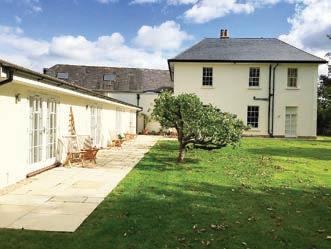
What have we learned?
Inspired to embark on your own project? Julie, Christine and Mella share their top tips from the renovation frontline.
Kitchen before
Kitchen after


November 2017
Major progress internally in Clock House. The decorators have steamed off old wallpaper, filled holes in plaster and lined the
• Be patient! As you can see, Clock House was not rebuilt in a day. What with plans to be drawn, the district council making decisions, builders to book and the weather having a say... time can tick on.
• Put aside a fund for unexpected horrors. The roof work was crucial but a rather large, boring cheque to write out.
• Appoint an architect and builder you can work with and trust. There were many times when it would have been easy to lose patience, become frustrated with delays and dismayed at ever-increasing costs, but being able to communicate easily with your contractors is essential if you want to survive and finish the project without a nervous breakdown!
Clock House B&B and Tick Tock Holiday Cottage, Burton Street, Marnhull, Sturminster Newton, Dorset DT10 1PH. For more information and to book, call 01258 820645, email: info@clockhouse-marnhull.com or visit the website at www.clockhouse-marnhull.com
29
Photographic Memory
Georgie Wakinshaw from our Ilminster office has one of Somerset’s most successful photographers among her ancestors. We take a peek into her family album
Isuppose having a great-grand-uncle who was a photographer has some perks. My family has passed down quite a collection of black and white photographs, mostly of unidentified relatives in unknown locations. Having dabbled in genealogy over the years, the detective in me quite enjoyed working out who was who; diligently scanning their photos and adding them to the family tree seemed to be a mark of respect to these long-forgotten souls that I never got to meet.
My family clearly didn’t like to go far. On both sides, my parents’ ancestors lived not much further than a five-mile radius of Ilminster. Funny, then, that 17 years ago I should move just a mile from Ilminster unaware of my family connections to the town.
John Bailey was born in Bridport, Dorset, in 1868 but by the age of two lived in Bower Hinton, Martock. After a short spell in Kent he moved back to Somerset in 1901, working as a printer and photographer. His business went from strength to strength; he had become a photographic master and his studio in West Street, Ilminster, was home to his letterpress printing business.
If you see an old photographic image of Ilminster or the surrounding villages, there’s a pretty good chance it is one of his. They crop up all over the place, from the town’s tourist information board to local antique shops, and I try to collect them. They’re amazing snapshots of life around the turn of the century.
Hanging on the wall of our cloakroom at home is a lovely picture of the smithy at Whitelackington, home to my great-great-great-grandfather William Templeman, master blacksmith. John Bailey took the photo – a joyous day as my ancestors pose on their bicycles, dressed up to the nines on their way to a wedding. He clearly liked the backdrop, deciding to create a postcard of the smithy that no doubt made him a few bob from his shop back in West Street.

In search of more photos, I put an alert on eBay and was thrilled when a J Bailey postcard popped up for sale showing the entrance to our own property. How funny he should choose a fairly nondescript junction (albeit by a pretty church) to park his car and set up his equipment in the neighbouring field, then over 100 years later I’m retracing his steps with our five-year-old across the field to look for fossils. History is a funny thing.
If you see an old photographic image of Ilminster or the surrounding villages, there’s a pretty good chance it is one of his
Having helped to open Symonds & Sampson’s Ilminster office in October 2017, I can safely say I’ve never felt more at home. A pretty, thriving market town with a great deal of history, it’s great to think a little bit was recorded by one of my own.
A few years ago I was instructed to market a house in Bower Hinton and noticed the front garden looked familiar. I found the photo of my great-great-grandparents and their children, posing on the front lawn. The sash windows and flagstone path were just the same. An eerie feeling, knowing I’d stood right on the spot where John Bailey had waited patiently for his photograph to emerge – a far cry from today’s instant phone snaps.

Almost around every corner I’m reminded of dear old Mr Bailey. He left quite a legacy and I hope he’d be proud. I might set myself a challenge each time I find one of his photographs, perhaps I’ll try to recreate the scene. I can’t say they’ve all changed for the better, but perhaps that’s me looking at them through a rose-tinted lens.
Georgie Wakinshaw Ilminster 01460 200790 gwakinshaw@symondsandsampson.co.uk

30
London
No Longer Calling?
Talk to most young people living in London and they will tell you they are struggling. They appreciate the access to art galleries, theatres and restaurants, but the cost of living – rent, council tax and commuting – means that few can afford regular evenings out. A dinner in with a bottle of wine and a boxset is often a nightly reality.
London’s expensive property prices are leading to an exodus of people in their early 30s from the capital, according to a report showing the economy of Britain’s biggest city increasingly dominated by low-skill jobs.

A report from the Resolution Foundation think tank said high housing costs meant more people were leaving London than arriving from the rest of the UK, and this is one of the reasons we are seeing more people from London buying and renting from us.
Milly English from The London Office says, “We get a lot of enquiries for property in Symonds & Sampson’s region from people with young families who are looking to bring

up their children in a cleaner and better environment. They look towards schooling, the delight of walking to school, uncongested roads, vast playing fields and the all-important country air.

“Housing, of course, is cheaper but so is a pint in the pub and with some of the most glorious countryside in the UK on the doorstep and the famous Jurassic coast nearby, the move becomes irresistible.
“Most of our contact with the early or late retirees, however, does not come from people living in London. Although they may work in the capital they have moved out and now commute from the home counties.”
Angela Gillibrand covers Devon for Symonds & Sampson and she agrees with Milly. “Most of the prospective buyers that I meet are from Surrey and Sussex, and they usually have a great connection to the region. This may be from childhood holidays or they could have children and grandchildren nearby and being within easy access will allow them to be a part of their lives.
“An often-repeated comment is how quiet it is in our area and how dark it can be at night. We have little light pollution so to enjoy and appreciate the night sky is a delight. And, of course, most importantly the family dog can get away from the pavements and traffic and run free. “When I bump into our buyers after they have been in their new home for a while, the inevitable comment is, ‘We wish we had done it earlier!’”
31
High housing costs and a hankering for a slower pace of life has prompted a steady exodus of people from London and the home counties to our region
Milly
English London 020 7839 0888 milly@tlo.co.uk
and all that
Before we do any major work for clients at Symonds & Sampson we ensure we receive written instructions. No signature, no work. It sounds obvious doesn’t it, but in 1922 our ‘old’ firm of Senior & Godwin – who eventually amalgamated with Symonds & Sampson in 1990 – organised a sale of the contents of Hanford House near Child Okeford, despite not having the client’s instructions to do so!
Back in 1922, Major Vivian H Seymer owned Hanford House, and the sale catalogue for the auction of the contents lists: “a portion of the furnish of the reception rooms and bedchambers, and the whole of the equipment of the servants’ bedrooms”.

The correspondence starts with a letter dated 21 April 1922 from solicitors Traill, Castleman-Smith & Wilson asking Senior & Godwin, as the letting agents, to auction the furniture at Hanford.
However, a telegram from Major Seymer in Kensington dated the same day said: “You have no authority to proceed at Hanford and no responsibility for your actions will be accepted.”
The solicitors, however, wrote again the next day confirming instructions. I wonder what conversations were happening on the streets of Sturminster Newton because, on 24 April, a letter was sent by Seymer saying: “I was surprised to hear you were proceeding with the sale as you will remember my particularly asking you to do nothing until I wired instructions.”
The confusion seems to centre on a second firm of auctioneers – Messrs Wilson of London – appointed by Major Seymer. In a letter dated 28 April from Senior & Godwin to Wilsons, it was clear that a meeting between the two firms did not go well. We wrote: “A representative had called at the offices of Senior & Godwin but the interview was somewhat heated and Mr Senior told him pretty plainly what he thought of them.”
We obviously did not like interference from the London auctioneers in Dorset matters and we had full support from the solicitors, who wrote: “We are pleased to hear that you told Wilsons what you thought of their actions in this matter.”

Mr Senior wrote to Seymer explaining that the agent letting
that Wilsons behaviour was unprofessional.
Wilsons were not so easily shaken off and when Major Seymer left for Sicily on 11 May, his father, Sir Basil Thomson, wrote: “He will take strong exception to your action in having catalogued and lotted the furniture without instructions from him. He told me that he had distinctly instructed you not to take any action until you had a telegram from him and he has instructed Messrs Wilson to conduct the sale.”
However, by 29 May, Major Seymer had seen through Wilsons and suggests they had “used covert threats of grave displeasure to get the work and then their man melted to nothing on meeting Mr Senior”. Seymer instructed us to carry on with the sale, but seemed far more concerned by then about the condition of the billiard table which was “alright in 1894!”
So all this fuss about a sale of surplus servants’ furniture. It appears that Wilsons were the rascals trying to muscle in on the country auctioneers’ sale but they found a very formidable man in the shape of Mr Senior.
It wasn’t the last time that a London agent underestimated the strength of our firm!
Hanford House is an early Jacobean property flanked by the heights of Hod and Hambledon Hills. The house was built in 1604 by Robert Seymer and his great-greatgrandson Henry was a renowned natural history scholar, and brilliant artist, whose main interests were insects, shells and fossils. In the 18th century, the family had some of the finest orange and lemon trees in the kingdom.
After being let for many years, the house became a school and was run from 1959 by Miss Sarah Canning who died in 2017.
Giles Wreford-Brown
Sturminster Newton 01258 473766 gwb@symondsandsampson.co.uk
Giles Wreford-Brown takes us back to 1922 for a cautionary tale from our ‘old’ firm about jumping the gun and seeing off London competition
The rascals trying to muscle in on the country auctioneers’ sale found a very formidable man in the shape of Mr Senior
1922
32
Lawrence of... Dorset
Driving along the country roads in South Dorset, I reached the village of Moreton. I was about to continue my journey when I saw two white ornate portico columns with imposing lychgates and had to investigate.
It is the entrance to the cemetery where the most famous inhabitant is TE Lawrence better known by the sobriquet Lawrence of Arabia. I was suddenly transported back to my teenage years as Peter O’Toole and Omar Sharif rode across the vast desert landscape in David Lean’s epic film.
I thought of the first scene when Lawrence rides his Brough motorcycle along a tree-lined lane and has his fatal accident. Then I remembered he had been stationed at Bovington Camp near Wareham and lived at Clouds Hill.

I was unaware, however, that he had been a friend of the Frampton family who owned the Moreton Estate and they allowed him to be buried in their family plot. Local folklore says that he was buried six feet from his headstone to foil grave robbers!

The dramatic film score whirled around in my head and I recollected the mesmerising scenes; the advance on Aqaba, Lawrence preening in his Arab garments, the hijacking of the trains and the big push on Damascus. All wonderful scenes.
For those who may have missed it, Lawrence was an archaeologist, war hero, writer and real-life Indiana Jones. He was renowned for his role during the Sinai and Palestine Campaign and the Arab Revolt against the Ottoman Empire during the First World War, and he played a significant part in

the establishment of the map of the Middle East as we know it during his time in the military there.
After the war, good-looking, poetic and charming Lawrence became a legendary figure with friends in high places; he was a tabloid hit. However, as a private man who even refused a knighthood, he decided to escape it all and move to Dorset. You can still visit his home today, courtesy of the National Trust, and it remains almost exactly the same as Lawrence left it. He referred to it as “a hut in a wood near camp wherein I spend my spare evenings” and its modesty is humbling for such an extraordinary man.
His funeral was held at the church in Moreton and was attended by a variety of celebrities from every walk of society including Winston Churchill, Siegfried Sassoon, Augustus John and Eric Kennington. His grave is inscribed with the motto of Oxford University, DOM MINA INVS TIO ILLV MEA – The Lord is my light.
There is, however, a silver lining. The neurologist who cared for him in his last days consequently began a study into the unnecessary loss of life by motorcycle accidents and this research led to the use of crash helmets in both the military and by civilians, which has saved countless lives since.
It is well worth a visit to the graveyard and the cottage, but even better to idle away 3 hours 48 minutes watching the film.
Visit the National Trust’s Clouds Hill, King George V Road, Bovington, near Wareham, Dorset BH20 7NQ. Tel: 01929 405616, www.nationaltrust.org.uk
 Andy Wakinshaw Sherborne
Andy Wakinshaw Sherborne
01935 814488
awakinshaw@symondsandsampson.co.uk
The legendary TE Lawrence set up home near Wareham. Andy Wakinshaw swirls his imaginary robes and tells us more
He decided to escape it all and move to Dorset
33
Following the Trafalgar Way
It is 1805 and the British Royal Navy has just beaten the French and Spanish at the Battle of Trafalgar but fatalities have been high and the illustrious commander-in-chief, Admiral Nelson, has been killed. His second in command, Vice-Admiral Collingwood, took command of the British Fleet. Shortly after the battle a severe storm blew up and lasted for several days. Collingwood was faced with the challenge of ensuring the safety and survival of his own and the captured ships; at the same time he needed to report the outcome of the battle to the Admiralty in London as soon as possible.
The first messenger in November 1805 was Lieutenant John Richards Lapenotière, of HMS Pickle, who reached Falmouth on 4 November after a hard voyage in bad weather. He then raced to London bearing the dispatches containing the momentous news of Lord Nelson’s victory and death on 21 October.
He rode “express in a post chaise and four”. Edited versions of Collingwood’s four documents that Lapenotière delivered were published in the London Gazette on 6 November and
subsequently in most papers. The first report contained the words: “I fear the numbers that have fallen will be found very great, when the returns come to me; but it having blown a gale of wind ever since the action, I have not yet had it in my power to collect any reports from the ships.” This news triggered understandable anxiety, particularly among the families of the 18,465 men who had been with Nelson at Trafalgar, to learn the details of the casualty lists, or “butcher’s bill” as they were commonly known.
Lapenotière’s journey was about 271 miles, taking 37 hours and costing £46 19s 1d. There were 21 stops to change horses on the way from Falmouth to London and his “account of expenses”, which was carefully saved for posterity in Admiralty records, shows his route, where he changed horses, and his costs. The route he took was the main Falmouth to London coaching road of 1805, so each stage was between 10 and 15 miles and completed at a speed of just over 7mph.
The route, which became known as the Trafalgar Way, took him through Axminster, Bridport, Dorchester, Blandford and Salisbury where he is known to have changed horses. There were a further four reports and all messengers took the same route.

If you decide to retrace Lapenotière’s route, do please call in to the five Symonds & Sampson offices on the way and we will point you in the right direction to find the black plaques commemorating the famous Trafalgar Way.
 Daniel Magee Bridport 01308 426921 dmagee@symondsandsampson.co.uk
Daniel Magee Bridport 01308 426921 dmagee@symondsandsampson.co.uk

Thirty-seven plaques mark the route from Falmouth to London travelled by Lt John Richards Lapenotière with the momentous news of Lord Nelson’s victory and death – and you’ll find many of them near our offices, writes Daniel Magee
The route took him through Axminster, Bridport, Dorchester, Blandford and Salisbury
34
Work from Home
Taking the train to London can be exhausting. The South West line from Sherborne takes about 2hr 15min but everyone appears to be working on their laptops as soon as they get on, and then at Waterloo it’s a mad dash to the underground or the taxi rank. Fine occasionally, but every day?
So what’s the alternative? Working from home used to be a bit of a joke. There was always a knowing smile among colleagues because everyone assumed that the person was taking a ‘pyjama’ day. They may send a few emails but most of the time they’d be watching television, taking the children to school and popping out to do the weekly shop, surely?
Thankfully, times have changed and today’s homeworkers are recognised as being focused, self-motivated and organised. To achieve their best results, their working environment will be free from distractions, which means that screaming children, barking dogs and demanding spouses are out of sight and sound.
So where can you go to get some peace at home so that you can concentrate on what you should be doing? A shepherd’s hut of course!
Originally used to shelter shepherds the hut is a mini home on wheels – the most famous shepherd’s hut in history belonging to Gabriel Oak in Thomas Hardy’s 1874 classic, Far From the Madding Crowd. Out of favour when farming methods changed, they are now making a remarkable resurgence as a garden – or field – office.
There are so many available it is difficult to choose which one to buy, but Dorset-based Plankbridge can help.


Built to last
Plankbridge luxury shepherd’s huts are built to last for generations. Established in 2000, the company describes itself as “the country’s leading hut-making workshop” and creates sumptuous living, working and recreation spaces for year-

– in a Hut
round comfort. Plankbridge offers a range of styles or your own bespoke design, and regularly delivers all across the country and abroad. See www.plankbridge.com for more details.
Want to try before you buy?
Not sure if a shepherd’s hut is for you? Why not get the feel for it on a glamping break? Tor View Shepherds Huts are likely to be Somerset’s best kept secret – until now. Perched high

up on the Mendip Hills overlooking Glastonbury Tor in the distance, there’s no sign and no doorbell. You can only get to the huts after receiving an email with your special code and directions. Lovingly handcrafted and designed to inspire, every feature adds to the feeling of exclusive luxury glamping. Take a look at www.torviewshepherdshuts.co.uk for more details.
 Imagine a morning commute, just across the lawn, to your shepherd’s hut
Jon Summers Poundbury
Imagine a morning commute, just across the lawn, to your shepherd’s hut
Jon Summers Poundbury
01305 217993
jsummers@symondsandsampson.co.uk
35
A Selection of Sales
Most unusual/quirky
Melbury Osmond, Dorset

Former gate house, Grade II believed to be about 1887. Vendors first leased it in 1965 and purchased in 1984.
Axminster, Devon
An interesting former church we had 73 viewings and competitive bidding at the auction.


Sparkford, Somerset
One of the most interesting roof lines and also a most impressive entrance.
Best Sea View
Portland, Dorset
An incredible view along Chesil Beach, The Fleet Lagoon and the World Heritage coastline to Lyme Bay.

Cullompton, Devon
The original timber interior has mahogany panelling. The veranda enjoys stunning views over the valley.
Charmouth, Dorset
In an elevated position with far-reaching views over Charmouth beach, Portland and deep into the Marshwood Vale.



36
Prettiest
South Cadbury, Somerset
This stunning house came to market for the first time in 56 years generating 60 viewings in 3 weeks.
Marnhull, Dorset
A quintessential Georgian house but not too large with a lovely wisteria over the door.
Affpuddle, Dorset
A Grade II listed detached character cottage renovated sympathetically to retain many original features.

Best Gardens

Osmington, Dorset
The former stables for Osmington House with attractive original walled garden set in ¾ acre grounds.

Beaminster, Dorset
Situated in a desirable hamlet we had multiple offers on this beautiful home.




Bradford Peverell, Dorchester
Formerly part of the substantial Bradford Peverell Estate of over 1,100 acres which was sold in 1952.

37
Most Interesting
Wimborne, Dorset

A Georgian town house modified for use as a 6 bedroom, 5 bathroom HMO for some years.
Shaftesbury, Dorset
It was formerly the well house to the Abbey and the origins date back to the 15th century.
Weymouth, Dorset
Dating from 1629, Grade II listed with character features typical of its age.


Best New House

Zeals, Wiltshire
A super energy saving house with 4KW solar P.V. panels and air source heat pump.
Ilminster, Somerset
Dating back to the 15th century and would have started its life as a medieval open hall house with open cruck beams.


Shroton, Dorset
This quality executive property has been constructed with attention to detail throughout.


38
Best Countryside View
Hardington Mandeville, Somerset


Nestling in 1.6 acres on the top of the village with breathtaking views across Somerset to the Dorset borders.




Portesham, Dorset
Enjoying the most stunning and far reaching views across some of West Dorset’s finest countryside.

you
 Axmouth, Devon
A residential farm with a racing yard and a wonderful outlook for the horses
Beaminster, Dorset Planning permission for a new dwelling and enjoying arguably the best view in West Dorset.
Axmouth, Devon
A residential farm with a racing yard and a wonderful outlook for the horses
Beaminster, Dorset Planning permission for a new dwelling and enjoying arguably the best view in West Dorset.
Best Thank
39
Star Quality
Apparently, 77% of us will research our holiday online before we book, and many will look at sites such as TripAdvisor to read the reviews.
But can you trust them?
There is the story about a man who launched a completely imaginary restaurant called The Shed in London. Unbelievably, after just eight months of writing all the reviews himself, the restaurant became the number one place to eat. People started bribing him to get a seat at the restaurant because it was notoriously difficult to get a reservation. Well it would be – it didn’t exist!
When I look at online reviews, I am pretty forensic – clicking on the contributor to see what other reviews have been sent so that I can get a profile on them. They may be serial complainers, nothing is ever right and even the smallest problem is blown out of proportion. Are they looking for some sort of freebie from the hotel or holiday company?

Then there are the gushing reviews, often following some recent low scores, that seem to contradict the poor ratings. A delve about in other posts shows them to be very local, which makes me wonder why they travelled five miles for a weekend away? I call them the ‘five-star friends and family review’.

Reviews can be useful when buying online. Comments that the item was a fake, or numerous reports of poor quality, allow me to continue my search, but am I being steered away to another retailer who has stacked poor assessments. Perhaps I am too cynical?
Some reviews are so bizarre I can only shake my head in disbelief. Like the complaint about a storage box that wasn’t waterproof, even though the product clearly stated it was for indoor use only. Or the supermarket order that was delivered ‘late’ (the delivery was scheduled for 6–7pm and arrived at 6.45pm.)
We get our fair share of poor reviews at Symonds & Sampson, but I would hope that potential clients click on the comments and read them. A tenant ranting about being excluded from a house because of their three dogs, cats and hamster may give us a poor rating, but when the details expressly said ‘no pets’ what are we to do?

The trouble is that the review stays online, however unfair and ridiculous, and as we rarely reply it can lose us business. Thankfully we have a lot of very happy clients who are very pleased to contribute, and as one tenant wrote recently: “Anyone worth their salt will see through idiotic reviews, but we are nonetheless slaves to the blinking social media. It is crazy that people hold so much store by these kind of things – we are losing the ability to connect with our fellow humans and make proper judgments.”
Well said! And perhaps the wheel will turn and the amateur restaurant or hotel critics will enjoy their experience without believing that anyone will be remotely interested in what they think. In the meantime, I am going to try to get a table at The Shed.
Should you take notice of star ratings and online reviews? Trudi Gumbrell gives us her (unbiased) opinion
The trouble is that the review stays online, however unfair and ridiculous
Trudi Gumbrell Yeovil 01935 382903 tgumbrell@symondsandsampson.co.uk 40
Heated Words
Want to avoid a row over energy performance certificates? Rachael James, Head of Lettings, offers advice on the updates in EPC legislation
Ihave written about this fundamental piece of legislation many times before, however there are seemingly ever-changing updates for landlords and lettings agents, and indeed for the local environmental health officials having to implement the new regulations.
A recap on the dates
• 1 April 2018. Properties let on new or fixed-term tenancies need an EPC rating of E or above (this includes listed buildings).
• 1 April 2020. Properties let on periodic tenancies starting after 2008 will also need an E rating or above.

The exemption register explained
No property is exempt unless it appears on the exemption register. If a property has a rating of F or G, the landlord needs to carry out the improvements recommended on the EPC. These improvements could include loft insulation, energy efficient lighting and heating.
Coming in to force this year if the EPC is still an F or G rating after all possible improvements have been made up to the sum of £3,500, the landlord can then apply for an exemption lasting five years. These works need to be proven, so ensure that you keep all surveys and invoices.
For more information, please visit the government’s website at https://prsregister.beis.gov.uk or pop into your local Symonds & Sampson office for a free consultation from one our lettings experts.
Tenant Fees Ban
As landlords prepare for the introduction of the tenant fees ban, Rachael explains what the ban includes and what landlords need to know
It has now been confirmed – there will be a ban on upfront letting agents’ tenant fees this year. This change in the legislation will certainly have an impact on the private rental sector. Here are some of the most frequently asked questions by landlords.
Why this legislation?
The aim of the bill is to reduce the costs that tenants need to find at the beginning of their tenancy. It is intended to rebalance the relationship between tenants and landlords, and provide a more affordable private rented sector.
What are the legal changes?
• Tenancy deposit to be capped at five weeks’ rent.

• Reservation fees to be capped at one week’s rent.
• Capped tenancy deposit fees (when a tenant vacates before their fixed term expires).
• Restrictions on issuing section 21 notices (formal notice to gain possession).
When will the ban be implemented?
It will become law in June 2019.
How will it affect me as a landlord?
Tenant fees pay for a letting agent’s time in processing thorough and critical reference and background checks and a check-in of a detailed schedule of condition of the property. Landlords will now have to pay for this time.
Landlords need to recoup the costs elsewhere, inevitably through higher rents, meaning the banning of fees runs the risk of hurting the very people the government intends to help.
Rachael James Blandford 01258 458473 rjames@symondsandsampson.co.uk
41
Finding the Right Tenant
We rarely get a ‘tenant from hell’. Partly, perhaps, because most tenants in our region are decent people, but also because we check, check and check again.
Referenced in detail
We thoroughly reference prospective tenants and it is the most important thing you can do when weeding out the good from the bad. Tenants should never expect to rent somewhere without providing details from a current employer and their current landlord, and this enables us to ascertain whether they are competent to rent and have a stable job.
We also obtain details of their employment history and previous rental details. We even stalk a few on social media to build up a picture of their lifestyle to see if our relationship during the tenancy is likely to be easy or difficult.
Our credit checks are through a specialised service, and we can see any county court judgments or bankruptcy history.

Potential tenants don’t seem to realise that, when our agents meet the tenants either in the office or at a property, they are being interviewed by us on behalf of our clients. We aim to ensure the tenant is compatible with the property and our client.
Visiting the property
There is a clause in the tenancy agreement that allows us access soon after the tenancy starts and every four months or so in order to carry out brief inspections. This gives us a greater insight into the tenant and how they are looking after the property and whether their lifestyle is compatible with the property. Good tenants need to be looked after, and this visit is invaluable to ensure all maintenance is reported and dealt with.
Receiving rent in advance
We often get tenants who are happy to put down several months rent in advance of the tenancy starting. We have never had a problem with this, but we are aware that some do not want us to visit or delve too deeply into their financial situation. However, we do need to ensure they will be able to pay their rent after the initial term has expired.
Situations may change
Of course, sometimes circumstances may change and someone who was a good tenant when the tenancy started may now be struggling as a result of job loss, family problems or illness. Being aware and spotting the warning signs helps and, as ever, communication is the key. That’s where our knowledge and expertise comes into its own.

Landlord's Property Checklist
Maintenance is a year-round job. Sam provides some handy reminders.
When it comes to preparing your property for the colder months of the year, it’s best to get your maintenance jobs organised well in advance. Here is a useful checklist so you can stay ahead.
• Repair and redecorate door and window frames.
• Ensure loft insulation is at least 270mm thick.
• Insulate around doors, in loft spaces and in between floorboards to reduce any draughts.
• Insulate any external pipes and any pipes in the loft to prevent freezing.
• Ensure the annual landlord gas safety and/or boiler service is in date.
If you manage the property yourself, please remind your tenant to:
• Have the chimney swept for any open fires, woodburning stoves, Rayburns or AGAs.
• Ensure the smoke alarms and carbon monoxide detectors are working.
• Ensure the shrubs and trees are cut back prior to the growing season, and protected from frost in cold weather.
• Ensure the gutters are clear from debris.
• Make sure the vents are not obstructed.
• If your property has an oil tank, remind tenants to keep it well stocked.
• Make sure tenants are aware of the risks of legionella bacteria in the pipes and taps if they’re away from the property for more than 10 days.
If you are a landlord seeking a tenant, Symonds & Sampson’s ARLA-qualified experts are ready to help. Call in to your local office for a chat.
A combination of thorough checks and gut instinct is the secret to our success, explains Sam Brown
Sam Brown
01308 426926 sbrown@symondsandsampson.co.uk 42


































No landlord is the same so we offer a wide range of services to suit all We are the regional letting experts with ARLA qualified staff working from 8 centres Regular and detailed inspection reports for managed properties Legal paperwork updated annually to ensure compliance & peace of mind for our clients 118 Legal obligations for landlords. We keep you legal & compliant. Specialist property management department 161 years of letting every type of property in all kinds of markets Acting for over 2000 landlords & managing 900 properties 43
The World’s Village Fete Best
“
Afete worse than death” is often how local village fetes are referred to in my family, and it is true that they can be dry, drab and downright dull affairs, and one or two a year is probably sufficient. However, there are some truly spectacular fetes out there if you just know where to look….
There is a huge amount of the absurd such as mini motorbike jousting and cow pat bingo
Chettle village fete has certainly earned its title as the wackiest fete in Dorset – it is truly bonkers and it attracts not only locals but a number of folk from London and afar. Over the last four years it has raised tens of thousands of pounds for local, national and international charities with an attendance of up to 3,000 throughout the day each year.
Considering Chettle is a tiny family-run hamlet consisting of mainly sheep and cows with a human population of just 90, this is no mean feat. It is the hard work of everyone in the village alongside a few hare-brained schemes and ideas that makes it so special.
Of course there are the usual stalls like cream teas, coconut shy, face painting, donkey rides, bang the nail, cakes, books, jams, welly-wanging (for which I currently hold the silver medal), human fruit machine, pets corner, a helter-skelter and so on, but there is also a huge amount of the absurd.

Other activities include the alternative dog show hosted by the Brigadier and the bonkers Janey White, with a ‘pimp your puppy’ stand ready for the best dressed dog award. There’s mini motorbike jousting, the Chettle Derby, wonky bike riding, cow pat bingo and an amazing art auction featuring art by talented locals and famous artists – 2016 saw Axel Scheffler, the artist behind The Gruffalo, donate a painting done just for the Chettle fete art auction.
No charity do is complete without a raffle, but this is a raffle with prizes you’d actually like to win; you won’t walk away with an aged bottle of bubble bath or a nearly new foot spa. Previous winners have claimed Wimbledon, festival and West End tickets, fine dining experiences, spa days and signed items from A-list celebrities, to name just a few.
You can deposit the children in the kids’ zone where there are craft activities all day long, and head to one of three bars – Horsebox Cocktails serving special Chettle concoctions, the general bar or the Chettle Pimms and Prosecco Truck. You can also tuck into pizzas, burgers, curries and other culinary delights, and there is usually a band or disco if you’re in the mood for dancin’.
One of the true highlights of the fete is the Miss (Hairy) Chettle Beauty Pageant presented by Raoul Bandana (who has his own theme tune). In short, this is the worst (but absolutely the best) drag show around entered by peer-pressured or slightly inebriated fete attendees. It will have you in stitches.

Although not your everyday fete, it is certainly a family day out with a touch of Carry On humour that hopefully goes over the children’s heads, and there is drinking, dancing, music and merriment well into the evening for the ‘adults’.
I also believe it is the only fete with its own souvenirs and logo, and you can’t leave without a flying strawberry bag, tea towel or mug!
It is community spirit at its best with a little help from their friends…
Sadly the fete could not take place in 2018 due to some unhappy circumstances but we are promised that it will be back bigger, bolder and barmier than ever in 2019. So look out for those strawberries!
Immy Robinson Stock Gaylard Estate Office 01963 23511 office@stockgaylard.com

It’s quite a claim, but Immy Robinson believes Chettle village fete has earned the top spot thanks to its wacky stalls and covetable raffle prizes
Raffle winners have claimed Wimbledon, festival and West End tickets, fine dining experiences, spa days and signed items from A-list celebrities
44
Primrose has a background in Naturopathic and Complementary health studies as well as a degree in Homeopathy. She uses this knowledge to design wholesome and natural food which nourishes the body throughout the day.
At Primrose’s Kitchen we believe great ingredients speak for themselves. We only use the purest organic ingredients that will never pollute your body or our world with all products being gluten-free and vegan-friendly. Our quirky fruit and veg combinations are sourced locally to our Dorset kitchen, from British farmers where possible.








Fresh fruit and vegetables used in the products are slowly air dried at low


temperatures to maintain maximum flavour, colour and nutrition. By doing this the Primrose’s Kitchen range offers a quick and delicious way to live in line with nature any time of the day.
At Primrose’s Kitchen we lovingly create wholesome superfood that nurtures the soul and respects the planet. Our range of 100% natural products include muesli, granola, oatmeal, porridge, sprinkles and smoothie boosters. It is absolutely deep down delicious! And we bundle it all up in 100% plastic-free home compostable packaging, so that we only leave nourished smiles behind. Visit the website primroseskitchen.com or email info@primroseskitchen.com

 LIVING IN LINE WITH NATURE
LIVING IN LINE WITH NATURE
Intelligent, bold and energetic, our terrier-like Auctioneers know a trick or two about how to get the best out of a room of potential buyers. Barking enthusiastically to seek out the bidding, we’ll ensure a trustworthy, bespoke service for all our customers.
With a pedigree in all types of auction sales, we enjoy whatever’s going, going, on!
 Terrier
Terrier
AUCTIONS
We mark the 500th anniversary of the death of Leonardo da Vinci, look back at our old auction catalogues, and look forward to an exciting future for Frome livestock market. Master of the gavel, Mark Lewis, wonders whether a grade II listed farmhouse ‘spoke’ to him prior to auction, and there’s an intriguing story about our region’s bridges.
Catch up with the news from our farm dispersal sales. Join Cerne Abbas – and us – in commemorating the centenary of the sale of most of the village. And look ahead to the auction dates for 2019.
The Da Vinci Code
As the 500th anniversary of the death of Leonardo da Vinci falls on 2 May 2019, Richard Kay looks at the man behind the easel... and gives us his best Mona Lisa smile


Leonardo da Vinci was not really a painter, any more than the Nobel prize-winning literary skills of Sir Winston Churchill should label him simply as a ‘writer’. Art was not his profession. After scant education, Leonardo showed an extraordinarily enquiring mind and art was just a conduit to the better understanding of an intriguingly complex world.
Leonardo da Vinci was not really a painter. Art was just a conduit to the better understanding of an intriguingly complex world
Leonardo’s mind was so restlessly inquisitive that he could no more consider a picture finished than he could consider his learning complete; each informed the other and each was relentless.
Leonardo’s renown after half a millennium rests disproportionately upon what has become known, crassly, as the world’s most famous picture: the Mona Lisa. It is hard to think of any picture with a greater fame. Curiously, the picture’s current celebrity arises, at least in part, from two unconnected events in which Leonardo himself played no role.
Luigi Calamatta’s meticulous lithograph of the picture (illustrated here), completed after years of trying to capture the tantalising sfumato (smokiness) of Leonardo’s gauzy outlines, made the painting famous by its immediate worldwide acclaim. The print run of 500 was an instant success and is now exceptionally rare. Its success lifted the picture from relative obscurity; in the 1840s, the writer Stendhal had little to say about Lisa except to note that she had no eyebrows.
Then, in August 1911, Vincenzo Peruggia, an Italian workman on a contract at the Louvre, loitered after hours in a cupboard and strolled nonchalantly out of the museum the following morning with the unframed picture underneath his arm.
French outrage was instant and – more importantly –anthropomorphic. The theft was portrayed immediately as a kidnapping: Lisa had changed from oil on panel into flesh on bone. “She” had become a personality and every French citizen clamoured vociferously for her safe release. For over two years, Peruggia kept the picture under his bed, just a few hundred yards from the Louvre. Then, with a clumsy but dutiful patriotism, he offered it to an art dealer in Florence.
After its authenticity was confirmed and great sighs of relief uttered by all concerned, the picture was returned to Paris in triumph following an exultant tour of Italy. Her indefinable smile allowed wistful dreamers to attribute a sly allure to her abduction. Mischievously, she now seemed to be asking: “So, where have I been hiding for two years?”
Nowadays, if you know only one picture, it’s probably the Mona Lisa. Crowds flutter mothlike around her at the Louvre, all day and every day; none sure why her glorious aura holds their quizzically rapturous gaze. Far above the hubbub, a baffled Leonardo would also have a similarly enigmatic smile upon his bearded face as, of course, he wasn’t really a painter at all.
Richard Kay 01460 73041 richard.kay@lawrences.co.uk


48
map of the village. Most of the properties in the main street were being offered on behalf of Lieutenant-Colonel Eaton who had bought the estate from Sir Eric Hambro (of Hambros Bank) only five years earlier.

There were a number of quirky parts to the catalogue. The cottages referred to the Housing Act and how many people could live in the property. Many were just two bedrooms but often seven people were allowed, and in one case 10½ (the half being a child under 10 years of age).
Part of the sale included the cottage hospital with doctor’s residence let at one shilling per annum on a lease expiring in 1972. The catalogue refers to the tax on the rent being negligible!
Most of the water was supplied from an estate tap nearby, and the rents are stipulated as being between £5 and £15 per annum. The estimate was that the rents could double and sometimes quadruple, but I wonder whether an outsider would have paid more to live in a property in a remote part of Dorset. Perhaps it was wishful thinking on the part of the London auctioneers.
I am not sure why Eaton was selling after such a short time of ownership. He could have been trying to profit from an uplift in values by selling in part after possibly buying the whole at a discounted rate.
He was, however, unusually offering buyers the chance to purchase in instalments so he was putting himself forward as a mortgagee. Was this desperation?

Mark Lewis delves into our vault of back catalogues and discovers the property auction of his dreams... or should that be nightmares?
What do you fantasise about? Scoring the winning goal at Wembley, being the prima ballerina at Covent Garden, performing on the Pyramid stage at Glastonbury or collecting your Bafta?
For an auctioneer it will depend on your expert discipline. A fine art auctioneer will think about the world record price for a Van Gogh or a Damien Hirst, while for a car enthusiast it could be the rare vintage motor that has not surfaced for a generation.
Part of the sale included the cottage hospital with doctor’s residence let at one shilling per annum on a lease expiring in 1972
An Auctioneer’s Dream ‘‘‘‘
For me it would be all of the above, but a look at some of the auction catalogues from our vaults has revealed some mouthwatering property sales. An auction in 1937, for example, was for the Milton Abbey Estate where a total of 1,718 acres including more than 50 cottages and building plots would take place over three days.
Having successfully auctioned many properties in the village, I opened the catalogue and looked at the lots and the
I then thought about the year; 1937 was the year of the recession within the Great Depression in Britain when unemployment doubled to 20%, and a cutting from the local paper confirmed my thoughts as the auction results were reported: “Many local farmers and residents were present at the sale but for 28 lots there were no bids and 24 lots were withdrawn. Of the nine lots sold, four were by private treaty and on Monday morning only two cottages were sold.”
So rather than being a dream auction it looks more like a nightmare. Perhaps I will daydream about the Pyramid Stage and start practising my “Hello Glastonbury!”
Sold prices in 1937 were quoted as £400 for a threebedroom cottage with garden. To put this into the context of today’s prices, I sold number 11-12
The Street, Milton Abbas in March 2018 for £298,000.
 Mark Lewis Sturminster Newton 01258 474266 mlewis@symondsandsampson.co.uk
Mark Lewis Sturminster Newton 01258 474266 mlewis@symondsandsampson.co.uk
49
Frome Livestock Auctioneers

Livestock markets play a fundamental agricultural role, not only for trading livestock but also for people to network, socialise and share information. Frome livestock market has served the agricultural community in Somerset and surrounding counties for many generations, and with the decreasing population of livestock markets in England (from 550 in 1940 to 80 centres today), livestock travels from across the south of England to be traded at Frome.
As the livestock industry evolves further, Frome Livestock Auctioneers (FLA) focuses on adapting and investing in the future to ensure the business remains sustainable so that we can continue to improve on the service we provide.
FLA is an independent company, with Symonds & Sampson and Cooper & Tanner providing auctioneers. This business structure enables both firms to offer a complete service to our farming clients. The auctioneers sell one day a week in the market and the rest of the time is spent conducting a range of property professional work. Frome market is hugely important to both firms as it provides a direct point of contact for clients.
One of the recent challenges that markets face is the increased use of online marketing services and social media to sell livestock. While there are benefits to this, there is no better way to achieve the maximum value for livestock than an auction.
FLA now has a new website (www.fromelivestock.com) tailored to meet our clients’ needs and this will ensure the business competes with alternative methods of trading livestock while not losing site of our unique selling point which
we can offer over any online service – a traditional live auction.

We are also looking at how to improve efficiency in order to provide a better overall service and utilising social media to promote sales and attract more buyers. This will include the ability to pre-enter livestock on the system and for buyers to preview updated entries preceding a sale.
As well as significant investment in the website, FLA is pleased to announce that Greg Ridout, Will Wallis, Andrew Tuffin and Bradley Towell have become shareholders.
Lester Williams, a partner at Symonds & Sampson, says: “It is hugely important to attract investment from the younger generation to ensure the future success of our business. We are fortunate to have an enthusiastic team of young auctioneers who are committed to ensuring that we provide a livestock market service in the future. Their investment in the business reaffirms their commitment.”
Bradley Towell, a FLA auctioneer, adds: “We were delighted to be given the opportunity to invest in a business and an industry that we are passionate about. Despite the challenges that the business faces, we are determined to adapt while retaining the core values of the business.”
As well as new shareholders, both firms are investing in new auctioneers with Charlie Coleman joining Symonds & Sampson and Ross Whitcombe joining Cooper & Tanner.
Despite financial and physical challenges, the future looks bright for FLA. The business continues to provide a competitive and transparent method of trading livestock and we look forward to a prosperous future for our clients and our business.
Coming in 2019
Please look out for our specialist poultry auctions in 2019. For more information, visit www.fromelivestock.com
Four of Symonds & Sampson’s finest have become shareholders in FLA, helping to ensure the livestock market goes from strength to strength
We are fortunate to have an enthusiastic team of young auctioneers who are committed to ensuring we provide a livestock market service in the future. Their investment in the business reaffirms their commitment
50
This Little Piggy went to Market
Will Wallis celebrates the triumphant return of pigs to Frome market

When I joined Symonds & Sampson, I immediately pushed for the return of pigs to Frome market. I became the pig auctioneer in my previous firm as no one else wanted the job. However, I have always thoroughly enjoyed it. It’s not an easy job, mainly because when trade is good it’s great, but when it’s bad it really is bad. But who doesn’t love a challenge?
Needless to say, starting anything from scratch is no easy task, but it is especially tricky with the pig market, which is well known for its volatility. Cheap imports and increased feed costs have put more pressure on producers in the last few years and, therefore, an inordinate amount of time has to be spent sniffing out pigs to sell while finding enough buyers to have a decent trade. It’s a fine balancing act and a bit of a catch 22!
However, support at Frome from both farmers and purchasers has been superb with more than 3,500 pigs sold in the first year. It is safe to say the section has been welcomed by all, with a number of new followers of the market.

Consumers need to be reminded of why they should back the nation’s farmers, with world-class welfare standards, minimal food miles and much reduced carbon footprint being just a few reasons.
Buy British and bring home the bacon for UK farmers.
Wednesdays:
Fat cattle, barren cows – 11.30am
cows, calved and bulling heifers – 11.00am Calves – 10.00am
Fat lambs, cull ewes, store lambs – 11.30am Fat pigs, culls, store pigs (fortnightly) – 10.15am Suckler cows with calves at foot (monthly) – 12.00pm
10.30am
10.00am
So, who are the buyers?
Generally, our buyers are local farmers, butchers or wholesale meat suppliers. Many of them would have bought back in 1997 at Sturminster Newton market and are still supporting us with their same famous buying style and techniques, although there might be a few more grey hairs.
Britain’s farmers rely on people buying British, and this is exactly what Frome market supports, and what we hope to promote with pigs. By developing a thriving pig section, I hope to prove that Brits do it best, and the industry is fighting back.

We want to show those who are going straight to slaughter that a better trade can be achieved once again at market. Back in the 1960s, Sturminster Newton market was seeing 40,000 pigs a year trotting through, and although we accept no such numbers will be seen again, we hope to see our numbers increase and maintain strong trade, week in and week out.
The section not only relies on buyers and sellers, but also the great British public who often go straight for the cheapest rashers of bacon they can find for their Sunday sarnie, without thought for welfare or provenance.
Will Wallis Poundbury 01305 236572 wwallis@symondsandsampson.co.uk
Support at Frome has been superb with more than 3,500 pigs sold in the first year
Dairy
Fridays: Store cattle and breeding cattle of all ages –
Breeding sheep and store lambs (monthly) –
Mondays (monthly): Sale of cattle subject to TB restrictions (from a holding under restriction) including fat cattle, barren cows and store cattle – 10.30am Tel: 01373 830 033 Email: info@fromelivestock.com www.fromelivestock.com Frome Livestock A uctioneers L td 51
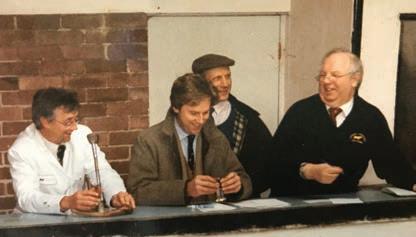










52
From the Archives









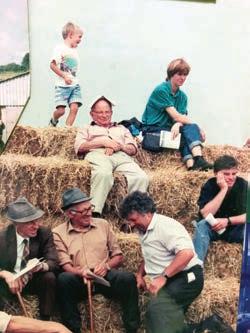


53
The house Talked
that
Mark Lewis wonders whether his mind was playing tricks, or did a grade II listed farmhouse really speak to him?
Can a house talk? Of course not! We can sometimes hear creaks and noises, but why do some people insist that a house has spoken to them? Are they deluded, gullible, fantasists, romantics – or do they have special powers?
In my line of work, I visit a lot of houses and always get an immediate feel for the property, appreciating the ambience and atmosphere. In June, however, I became a fully paid up member of the believers’ gang when I am sure a house spoke to me.
We had been marketing Hayden Farm at Charminster near Dorchester and were due to auction the property the next day. I visited so that I could prepare my notes to read out from the rostrum.
It was an unspoilt grade II listed farmhouse requiring modernisation, with a range of farm buildings, pasture and water meadows, the land bordering the River Cerne.

The farm had been in the Miles family for many generations and the last member of the family, Olive, had died a spinster aged 97. By all accounts she was a formidable woman. She had stipulated in her will that the property must be sold at auction and all meetings, whatever the time of year, were conducted in front of a roaring fire.
When I entered the house, it had such a bright, happy feel and the accommodation was well laid out but ‘raw’ and every room needed some work.
As I stood in the hall, I felt the house was talking to me. It was as though it was sizing me up: “Who are you? What do you want?” I shrugged, thinking my mind was playing tricks. But before I left, I stood in front of the fireplace and suddenly felt that I was being lectured. “Now then young man, you make sure somebody decent buys this house; someone who will breathe life back into it and make it a happy home once again.”
I shook my head, locking the door as I left. I then leaned over the field gate, wondering whether I had begun to lose the plot. Was I imagining it, or had the house really spoken to me?
Symonds & Sampson property auctions in Sherborne are a very popular way to spend a few hours and people come along for the drama, the theatre and for unpredictable excitement. The sale room, therefore, was full and many who could not attend arranged to bid over the telephone.
After various lots of agricultural land, commercial buildings and cottages for renovation were sold, our last property was Hayden Farm. The guide was £575,000 and I was started with a bid of £550,000. The bidding rose until we were left with two couples competing to buy. When one reluctantly shook their head, my gavel fell at £848,000.
The sale room erupted into an impromptu round of applause to celebrate the good fortune of the executors and as congratulations to the buyer.
So, who had been talking to me? Was it the house or the spirit of the powerful hard-working spinster who had lived her whole life at the farm? Or was my romantic nature just getting the better of me?
If it was Olive Miles, let us hope that she approves of the new owners. Perhaps they will have many convivial conversations in the years to come.
Mark Lewis Sturminster Newton 01258 474266 mlewis@symondsandsampson.co.uk

Now then young man, you make sure somebody decent buys this house; someone who will breathe life back into it and make it a happy home once again
54
Fancy a free trip to Australia?

Avandalising a Dorset bridge?


If you walk over one of the bridges in Sturminster Newton, Lower Bockhampton, Charmouth, Benville, White Mill, Wool or Wareham, you will see a sign that states: “Dorset – any person wilfully injuring any part of this county bridge will be guilty of felony and upon conviction liable to be transported for life by the court. T Fooks.”
Under the Malicious Injuries to Property Act 1827, the plaques sternly warn anyone against vandalism, but why would anyone want to damage these bridges? They are engineering works of art and many are listed as being of architectural and historic importance. The place name was erased when England feared invasion in 1940 – very Dad’s Army!
Under the Act people were transported for damage by fire to buildings, as well as damage to corn, trees and
vegetables, railway carriages, telegraphs, turnpike gates and toll houses. They must have been a rowdy lot and a passage to Australia would mean they rarely returned – after they served their sentences they would not have had the money to pay their fare.
It wasn’t only Australia; America and any other colony under British control could be the destination and often penal colonies were established. Australian penal colonies included Norfolk Island, Van Diemen’s Land (Tasmania), Queensland and New South Wales. Advocates of Irish home rule or of trade unionism (the Tolpuddle Martyrs) sometimes received sentences of deportation to these Australian colonies. The first ships to leave Britain arrived at Port Jackson, Sydney, on 26 January 1788 – a date now celebrated as Australia Day.
So when you see the signs on the bridges you can tell the story, but don’t feel tempted to vandalise the bridge – you won’t get free passage to Australia any more!
Steve Allen Bridport 01308 426920 sallen@symondsandsampson.co.uk
Steve Allen, Residential Partner in our Bridport office, reveals an unusual way to get a trip Down Under
Why would anyone want to damage these bridges? They are engineering works of art
55
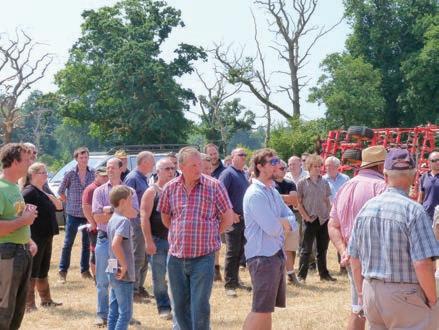


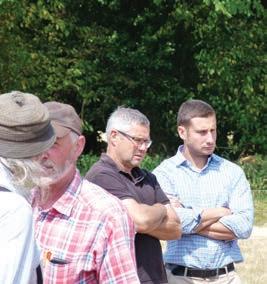





5656
Hampshire Farm Dispersal Sale









57
Property auctions 2018
From achieving a record-breaking sale price to having our collar felt by the road traffic police, we look back on the highs and lows of last year’s packed property auction schedule
Highest price
Grove Farm, Somerset at £1.69m a new record for Symonds & Sampson.


Most legal downloads
3,975 total documents downloaded for the 5 October auction in Wimborne.
Most bids
107 for Kings Corner Barn with proxy, telephone and multiple bidders in the room all competing. The sale price was 80% above guide.
Most distant buyers
One buyer was on a boat in the Mediterranean and bid by telephone. Another was in Australia and bid by proxy.

Most historical
Elm Tree Farmhouse with links back to Sir Walter Raleigh. The lot was last sold in 1617.

Most hard-working solicitor
The solicitors acting for the Morden Estate where they had to rewrite the contract clauses numerous times during negotiations with prospective bidders.
Most disorganised buyer
The one who forgot to transfer his deposit monies to his debit card and had mislaid his cheque book. The seller’s solicitor did not allow him to sign the memorandum until she had the funds.
Highest percentage above guide
Land at Verwood sold 593% above guide.
Highest attendance
Hampshire in April. The car park was overflowing so buyers parked along the dual carriageway, precipitating a visit from the traffic police.
Best commercial lot
High West Street in Dorchester. The buyer has the privilege of being a neighbour of Symonds & Sampson’s residential office in the town!
Most conservation-minded lot
We sold land on Portland to the Portland Bird Observatory and Field Tenure whom we are sure will be great custodians, and woodland at Semley was purchased by the Wiltshire Wildlife Trust.
Best wreck
Whitecross farm near Beaminster. We showed 83 people around the property, 31 people registered for the legal pack, resulting in 28 bids at the auction.

Best TV moment
The BBC filmed our March auction and a property in Milton Abbas which will be part of a programme called The Village in 2019.
Most loyal client
Red House Farm, Sherborne. The vendor stated in her will that the property must be sold by auction and that Mark Lewis of Symonds & Sampson must be the auctioneer.
Hottest auction
Our July sale was held on the hottest day of the year. Our sale room had limited ventilation and the microphone broke!
58

2019 AUCTIONS ‘Such a charismatic auctioneer and the staff were so knowledgeable and helpful. Great atmosphere and the only place to sell your property.' Google review September 2018 WIMBORNE Friday 1 March SHERBORNE Friday 15 March AXMINSTER Thursday 11 April SHERBORNE Friday 26 April SHERBORNE Friday 24 May AXMINSTER Thursday 6 June SHERBORNE Friday 14 June SHERBORNE Friday 2 August SHERBORNE Friday 25 October SHERBORNE Friday 27 September AXMINSTER Thursday 10 October SHERBORNE Friday 6 December 59
A Giant Leap for Cerne Abbas
The village of Cerne Abbas will be celebrating a 100-year anniversary in September


In September 2019, Cerne Abbas will commemorate the centenary of the sale of most of the village by the Pitt-Rivers family.
The sale, which took place by auction at the town hall in Dorchester, was a major event in Cerne Abbas’s long history.
In 1705, Cerne Abbas was owned by the Pitt family of Stratfieldsaye and it became a market town of some 1,500 people. Its wealth was partly generated by brewing, and there were also milling, tanning, silk weaving, glove and hat making as well as other small local industries.
The auction was conducted by Senior & Godwin, a highly-regarded firm which amalgamated in 1990 with Symonds & Sampson
Sadly, the 19th century saw the gradual decline in Cerne Abbas’s fortunes, reflecting a nationwide downturn in the rural economy. The population halved and it became a village again, rather than a town.

Things had not improved by the time the sale took place in 1919. No doubt the heavy duties which had been incurred on the death of his father contributed to Alexander Pitt-Rivers’ decision to sell that part of the family’s estate.
On the day of the sale, the town hall in Dorchester was packed. The auction was conducted by Mr H.S. Senior of Senior & Godwin, a highly-regarded firm which later amalgamated with Symonds & Sampson. “The residential, agricultural and shooting” properties of Cerne Abbas and Melcombe Horsey were sold in 75 lots.
Alexander Pitt-Rivers raised £67,402 from the sale. A number of properties he owned were not included in the sale but were given by him to the village, namely the school and the headmaster’s house and the old Wesleyan chapel. The gifts met with much applause when announced by the auctioneer.
Some of the tenants bid successfully for their properties. Some, like Mr Green the butcher, even became landlords themselves by acquiring more than one property.
The spring 1919 and 1921 electoral rolls indicate that few tenants lost their properties as a result of the sale; about 80% of those who were tenants before the sale were occupying the same properties in 1921.
The sale, together with the mobility provided by increasing car ownership, slowly brought new life to Cerne Abbas. Today, Cerne Abbas is a thriving and active community of more than 800 people.
Cerne Historical Society Events
Various events including an exhibition and reenactment of the auction sale are being planned around the centenary of the sale (24 September 2019). Details will appear in due course on the Cerne Historical Society website –www.cerneabbashistory.org
Notable prices
• The Giant was reserved from the sale, with access to it, and was later passed with an endowment to the National Trust.
• The Abbey House, the Abbot’s Gatehouse, the guest house and 196 acres. Reserve £6,000, sold £7,600. (In 1937 the purchaser’s widow sold the Abbey Estate, 500 acres and several cottages for £6,350).
• Barton Farm, Dairy House, 14 cottages and 822 acres. Reserve £12,000, sold £12,500.
• The New Inn, sold to Eldridge Pope brewery, £650.
• The butcher’s shop, sold to the tenant, Mr Green (pictured), £250.
• The Manse. Reserve £260, sold £380.
60



Ethics • Responsibility • Awareness • Sustainability • Environment
Intuitive and highly sensitive, able to respond to the subtlest of request and with the ability to predict our clients needs in advance, our Agriculture team thrive on a challenge. Like a master craftsman, we’ll skilfully manoeuvre even the most challenging of agricultural tenancy and deliver exactly the required outcome.
Good natured and down to earth, we’re definitely not afraid to get our paws dirty.

Collie
AGRICULTURE
Your essential overview of the farmland market, and a look at our farm sale highlights. Discover what links our firm to King Charles II. Beware the pitfalls of an off-market sale of land. And enjoy the benefit of our expert’s tips for keeping hens. We reveal how to manage the complexities of stamp duty land tax. How landowners can stay secure against rural crime. And take a sentimental journey with vintage tractor fan and rally organiser, Nick Rymer. We explore some Dorset dairies with a difference, and join Anabel Merriman as she follows in the footsteps of her remarkable relatives. We explain why contract farming agreements can tick the box for both farmer and contractor. And talk Land Rovers, succession planning, and the role of robots in agriculture. There’s even a whiff of the new regulations about septic tanks (yes, really!).
63
The Farmland Market
Supply
For a decade I have reported in most years of a falling supply of farmland. However, 2018 marked a change with more land marketed in our region and certainly more land at a national level. Several estate and portfolio sales have accounted for a large proportion nationally and there has been an increase as we go west into Devon where farms tend to be smaller and change hands more frequently.
The main reasons for sale are retirement, followed by one of the three D’s – death, divorce and debt – although forced sales are fewer at present with reasonable commodity prices. Our experience to date is Brexit appears to have had little influence on sales, although it could have acted as a prompt for some of the larger institutional sales in the eastern counties.

We predict that increased supply will continue, but one could say this is making up lost ground for years of undersupply.
Demand
In the UK, we seem to have an inherent desire to own property, whether that be bricks and mortar or land, therefore demand to buy land continues to be strong. As always, location is the key. We have seen farmland achieve over £11,000 per acre one side of a town and, under two miles away, not achieve its guide of £8,000 per acre.
Land with strong neighbours or near neighbours and with good access is selling and achieving much higher values. Without these attributes, some land is struggling to find a buyer above £8,000 per acre.

Buyer type
Commercial farmers account for approximately 50% of land buyers. They tend to have a budget dependent on borrowing ability and are more focused on the impact of Brexit than other buyers.
Corporate and individual investors are next. Many see farmland as a safe, tax efficient way to diversify their portfolios. Potentially this presents ongoing opportunities to farmers because a contract farmer, a tenant or a licensee will be sought to provide a return or simply keep the land tidy.
Following an often lengthy planning process, proceeds from development land sales are filtering through to farmers and landowners who are seeking to rollover gains.
Investors and rollover buyers tend to seek larger parcels of arable land with a minimum of 200 acres and preferably over 500 acres. Such parcels tend to create the most interest, therefore it is important to market widely.
Residential buyers are present but can afford to be selective. The supply of smallholdings and sizeable dwellings with land has increased. That said, our country house specialists had one of their busiest autumns in 2018. If marketed correctly and at a sensible price from the outset, smallholdings will meet good competition; but get it wrong and marketing can become prolonged and sometimes result in no sale.
Symonds & Sampson Stags
Greenslade Taylor Hunt Carter Jonas
Strutt & Parker Woolley Wallis
The divergence of values and price volatility is likely to increase
Andrew Tuffin, Head of Farm Agency, reveals that increased supply and a widening of values are the main features of the current farmland market
Symonds & Sampson Stags Greenslade Taylor Hunt Carter Jonas
Strutt & Parker Woolley Wallis
Market Share of Farms & Land Sold in our region 2017/18
Source: RICS/RAU
64
Values
The range of farmland values is widening. We are seeing values from £5,500 per acre to £16,000 per acre (although don’t be fooled into thinking that the average is £10,750 per acre). This covers arable and pasture land and excludes small parcels.

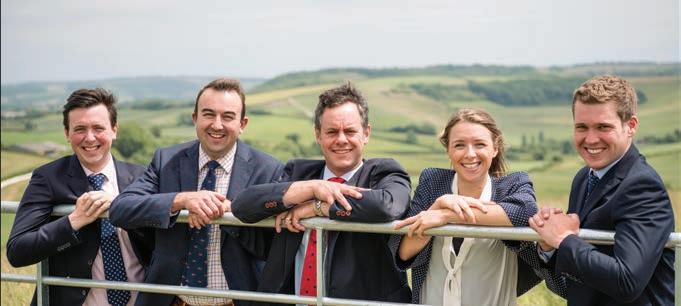
On a side note, it is interesting to read some other agencies reporting only (generally higher) arable land values. Maybe we are the only agents selling pasture land!
Despite these extremes, most land is achieving between £7,000 and £10,000 per acre in our region, while in some areas of Kent and East Anglia, for example, agents are reporting values below this.
It is crucial that your agent knows buyers and the local market to first set the guide price and then to negotiate and achieve a sale on the best terms.
The future
As we enter a new world of agricultural policy and trade relationships, agricultural commodities and land values will be scrutinised even more closely by buyers, lenders and economists, and the divergence of values and price volatility is likely to increase.
The farmland market has remained fairly robust after two years of uncertainty and provided there are no major shocks such as an interest rate hike or change to inheritance tax, then land seems like a pretty safe place to have money invested.

Andrew Tuffin Sturminster Newton 01258 474268 atuffin@symondsandsampson.co.uk
Jack Edwards 01722 334323 Wiltshire Will Wallis 01305 236572 South Dorset Andrew Tuffin 01258 474268 Dorset Rebecca Kaye 01935 382901 Somerset Ross Willington 01297 33122 Devon The Farm Agency Team
65
Tuffin’s Top 10
As a Partner in the firm and our Head of Farm Agency, Andrew Tuffin is an unrivalled expert in the business of buying and selling farms. Here he picks his highlights from Symonds & Sampson’s 2018 sales

Best Farm Most Preparation

Watcombe Farm, Cerne Valley
A 659 acre arable farm with 3 dwellings. Guide £6.25m. 20 viewings by a mix of investors, arable and livestock farmers. Six offers. Sold to an investor well in excess of guide.



Most Satisfying
Grove Farm, Wincanton

A 130 acre residential livestock farm with potential. Auction guide £1.5m. Purchased for £1.69m by the same family who had farmed it as tenants in the 1970’s.
Langston Farm, Okeford Fitzpaine
A 169 acre dairy farm. Permissions obtained for a road entrance, then a Class Q dwelling. CGI's created, lotted, marketed and sold to 4 buyers.
Most Competitive
Lightfoots Farm, New Forest Farmhouse and outbuildings in 34 acres. 196 enquiries received, 53 viewings, 108 bids. Sold by auction in 5 lots for £1.1m, 35% over guide.
66
Quickest Sale
Crabhayne Farm and Edge Farm Stables, East Devon
Crabhayne 88 acres, guide £1,95m. The owners of Edge Farm viewed and fell in love. A buyer was secured by formal tender for Edge enabling them to buy Crabhayne in 2 months.

Hardest Work
Land at Semley, Shaftesbury
215 acres of common land and woodland. Sold to 27 different buyers so 27 contracts, 28 solicitors, much negotiation and copious plans. Achieved £5k – £15k / acre.

Best Diversification
Longest Chain
Child Okeford, Blandford
Glamping business on 7 acres with 4 yurts, consent for 3 more, solar-powered facilities and ponds. Sold to local farmer seeking to diversify.
Shipton Gorge, Bridport Manor Farm (100 ac) purchased by St Lukes Farm owner St Lukes Farm (27 ac) acquired by Westcliff Farm owner Westcliff Farm, West Bay (42 ac) sold to neighbour.
Most Potential
Petersfinger Farm, Salisbury
43 acre farm on the city water meadows. Period house, cottage and barns with consent for 4 dwellings. Guide £1.1m in 4 lots. Sold as a whole over guide.



Most Divergent Location
Gillingham
SOLD 67 acres good arable land 1 mile west bought by a farmer for £11k / acre. STILL AVAILABLE 66 acres pasture on east outskirts at £8k / acre.

67
Cavalier Attitude
The Monarch’s Way footpath follows the route taken by King Charles II after his defeat by Oliver Cromwell at the Battle of Worcester. It stretches from Worcester via Bristol and Yeovil to Brighton, and part of it runs through Grove Farm in North Cheriton – a 130 acre farm auctioned for £1.69m by Symonds & Sampson on 21 September 2018.
I live in the village, so I have often walked along part of the Monarch’s Way without knowing very much about the history, but when Peter Judd instructed us to sell the farm, I looked into the story of King Charles’s dramatic escape.
When Charles set off on his journey in 1651 he was a wanted man. Cromwell had offered a reward of £1,000 for information leading to his capture. His escape – with near misses, mistaken identity and heart-stopping moments – was as thrilling as it was dangerous.
Grove Farm sold for £1.69m; the highest price achieved for an individual lot at a Symonds & Sampson auction


While in the West Country, the king crossed through some of our most stunning scenery and was sheltered by Colonel Wyndham at Trent. From here, he travelled down to the Dorset coast where a ship had been found to take the king to France. He stayed overnight at the Queen’s Arms in Charmouth, but the promised ship did not materialise and the king beat a hasty retreat inland, returning to Trent.
From Charmouth, the Monarch’s Way follows the South West Coast Path east along the Jurassic Coast of Dorset past

St Gabriel’s Mouth, over Golden Cap, the highest point on the south coast, through Seatown, over Thorncombe Beacon and past Eype Mouth to West Bay.
From here it heads north alongside the River Brit to Bridport, swinging west and north to Pilsdon Pen, briefly joining the Wessex Ridgeway eastwards before reaching Broadwindsor where the king hid overnight in the George Inn on 23 September 1651.
He then continued eastwards to the north of Beaminster, before zig-zagging north and east to Winyard’s Gap near Chedington, where the footpath meets the head of the River Parrett Trail. Continuing north, the path enters Somerset and passes Hardington Marsh, swinging east from Hardington Mandeville to East Coker and then north through Yeovil and Mudford.
Crossing the River Yeo and back into Dorset the path returns, like the king, to Trent. The king stayed here before setting out for the south coast and exile in France.
Skirting north of Sherborne to Sandford Orcas then reentering Somerset, the path passes to the south of Corton Denham to Charlton Horethorne and South Cheriton, then north to pass under the A303 to Wincanton. From here it continues north-east to Penselwood.
I spend a lot of time at the coast and have walked part of the coast path, but I intend to strike inland and follow more of the Monarch’s Way. It will be a lovely journey and, hopefully, less nerve-racking than it was in 1651!
Lester Williams
Sherborne 01935 818511 lwilliams@symondsandsampson.co.uk
What links King Charles II and Symonds & Sampson? The sale of a section of the Monarch’s Way walking trail, as Lester Williams explains
‘‘‘‘
68
Land Sales
As Andrew Tuffin highlights in his review, the farmland market has become extremely polarised, with values varying not only by region but by parish. Selling land off market can be attractive in certain situations. However, being properly represented is crucial to ensure you achieve the best result.
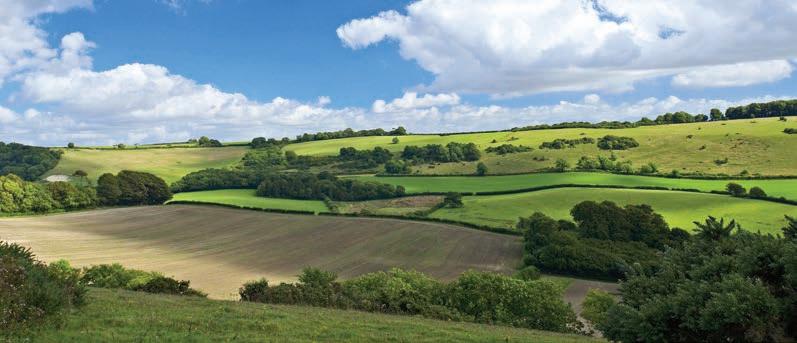
It is estimated that 20–25% of farms and land are sold ‘off market’. There are various reasons for this, although demand is the key overriding factor. Farmers striving for larger areas will often be in a position to pay a premium for adjoining land or, similarly, a substantial block of land within a sensible driving distance.
Residential lifestyle buyers are also serious contenders for land adjoining their property, and high premiums can often be commanded – irrespective of productive capacity.
Selling land on the open market still remains largely the best way to achieve the highest price. That said, in some instances an off-market deal may be preferred, such as where confidentiality is the objective.
It can sometimes be worth sounding out local interest before making a decision on how to market land, and buyers can sometimes make a direct approach to adjoining landowners, offering a significant premium. In some instances, this may be a once-in-a-lifetime opportunity that could merit consideration. Pre-emption or first refusal type agreements are also a common reason for an off-market deal.
There are many factors to consider when deciding whether to sell publicly or privately. Keen interest from a neighbouring property may give the opportunity to demand a premium to prevent public marketing. However, in some cases, competition from several buyers may be needed to ensure a higher price is paid.
One of the main points to consider is: how saleable is the land on the open market? If the answer is not very saleable, then it may be a better option to offer the land to an adjoining property.
Ensuring you receive the correct advice before committing to a decision is critical. An experienced agent will aid the decision process and advise on the possible options. In most cases, there is usually an option that has not been considered. If the decision is to sell off market, then ascertaining the value based on the seller’s objectives is crucial for negotiations to proceed to a successful outcome.
Open marketing will produce the market value which a private sale will not, therefore parties will need peace of mind that they have not vastly undersold or overpaid. An experienced local agent will have knowledge of comparable transactions. The strength of a seller’s position must be taken into account and it is important to recognise a serious offer when presented.
Parties often mutually agree on a sale before taking advice. Selling land, even by a private negotiation is often not as straightforward as it may seem. An independent agent with market experience and knowledge is key to achieving the best outcome. It is likely the parties will continue to be neighbours or acquaintances, therefore using an agent to negotiate a sale removes the personal awkwardness and some emotional stress.
One’s opinion must be clearly reinforced by evidence of recent transactions, which an agent has the ability and knowledge to source. Agreeing the sale price is only one step. There are many other factors to be negotiated, including Basic Payment Scheme entitlements, agri-environment schemes, rights of way, services, overage, timing and finance – to mention a few.
Items not covered before solicitors are instructed will cause issues later in proceedings, so it is best to cover as many points as possible before incurring charges.
Contact one of our farm agents if you are considering an offmarket sale or have received an approach.
 An
An
off-market sale – are you getting a fair deal?
Being properly represented is crucial to ensure you achieve the best result
Bradley
Towell Sherborne 01935 818514 btowell@symondsandsampson.co.uk 69
Memories of a childhood spent around my parents’ chickens, collecting the wonderfully warm eggs to ‘help’ my mother make sticky cakes and sponges has meant there will always be a chicken coop in our garden.
Over the years our own flock has grown somewhat to include three children, a gaggle of geese, a pondful of dabblers, ‘seasonal’ turkeys (“They’ve gone on their holidays, George…”), some vocal guinea fowl and, at last count, over three dozen chickens of all shapes, colours and sizes.
Home to Roost
Dorset is home to Flyte so Fancy, producers of quality poultry housing for the garden. We asked owner Anne Weymouth to give us her top tips for anyone considering keeping a few hens
draughts; their health will soon fail if kept in such conditions.
A robust, draught-free but well-ventilated house is the answer. The hen house floor should be generously scattered with chopped hemp or wood shavings (never hay) and there should be at least one cosy nestbox per four to five hens.

If your priority is egg production, you can’t go wrong with Black Rocks. If childfriendliness is essential, fluffy Orpingtons are a good choice
Keeping a few hens in the garden is a wonderful hobby for both grown-ups and children, but we do advise that you devote the same time, research and consideration as you would when bringing any pet into your family.
Perhaps first, think about which types of birds you would like to keep. Broadly speaking, chickens come in three sizes: the diminutive bantam, cute but potentially fiery characters; the more robust medium-sized birds who provide the most variety, and finally the matronly and statuesque large fowl.
Within these size ranges fall a myriad of modern hybrid and traditional pure breeds, some noted for their egg-laying abilities, some for their docility and some purely for their beauty. Nature doesn’t put all virtues into one package but does create such colourful characters that you may plan to have just four birds but end up with 10.
If your priority is egg production, then you can’t go wrong with a modern hybrid such as the Black Rock. If childfriendliness is essential, then fluffy Orpingtons are a good choice. Beauty is in the eye of the beholder, but I just adore the rather grand Brahmas, large and imperious but with affable natures.
The welfare of all animals in our care is paramount and a draughty henhouse simply will not do. While reasonably hardy creatures and tolerant to the cold, chickens hate damp and
To make life easy for you, the house should be easy to clean and also solidly built to keep potential predators at bay. Traditionally, wood has always been used for bird housing as it ‘breathes’ and is ecologically friendly when sustainably sourced.
An important consideration when choosing a hen house is whether your girls will be securely enclosed in a wired run to keep predators away, or whether to allow them free range of your garden.
Your feathered friends will need access to water and pelleted

70
food during the day, and a few handfuls of mixed corn can also be scattered each day as a tasty treat.
All chickens love to forage and one of the greatest pleasures of ownership is watching them do so. If they have a reasonable area of grass allocated, they will spend many happy hours ‘aerating’ the lawn, raking up the moss and filling themselves with delicious grubs and slugs – and your basket with wonderful eggs.


Anne and her team have been offering friendly, free guidance to beginners via her advice line (tel: 01300 345 229) for over 18 years. Information on reputable breeders, housing, nutrition and poultry-friendly vets is available at www.flytesofancy.co.uk
Slowly does it
The Slow Farming Company in Castle Cary, Somerset, on why you can’t rush good food

The Snook family has been farming at Clanville Manor Farm, Castle Cary, for four generations. Today, we’re in the process of going back to the old ways of traditional, holistic agriculture –reducing the need for fertilisers and pesticides, and allowing the land and animals to work together.
Our traditional breed beef cattle graze the fields in a mob, moving on to new paddocks each day, and are followed by a gang of free-range hens who scratch around eating the leftovers, spreading the muck and producing the most delicious ‘pastured eggs’. These eggs are sold by the Traditional Free Range Egg Company under the Birds & Herds banner and are available from independent retailers across the UK, including delis, farm shops, butchers and grocery stores.
Our beef is available directly from the farm, and if you’d like to know more about why our meat tastes so good, take a look at our website www.slowfarming.co.uk or email meat@slowfarming.co.uk
71
Our mission is simple. To produce nutrient-rich food that nourishes both the people that eat it and the land that helped grow it
Taxing Problem
In recent years, Stamp Duty Land Tax (SDLT) has become a far more complex tax regime, sometimes leaving both taxpayers and professionals perplexed by the intricacies of the rules surrounding it. So what clarification can we provide for some common SDLT queries?

Second homes and investments: do you have to pay the extra 3% if you are buying a buy to let but you are a firsttime buyer?
Broadly speaking, the 3% surcharge, which came into effect on 1 April 2016, levies an additional 3% tax rate on the purchase of a major interest in a residential dwelling where the acquiring party will continue to own another residential dwelling following the acquisition and the consideration paid for the interest in question is £40,000 or more. If you do not own an interest in another dwelling at the date of acquisition, the 3% surcharge will not apply. This is irrespective of whether you intend to use the property as your own residence or as a buy-to-let.
However, should an individual subsequently purchase a residential property that they intend to use as their main residence, the 3% surcharge will then be triggered, assuming that they retain their investment property also.
regardless of the size of the land. Evidence of non-residential use at the time of acquisition will therefore be important; this may include for example, evidence of commercial farming or grazing agreements to third parties for agricultural purposes.
Where land contains more than one dwelling, the residential rates could apply in part but a claim for multiple dwellings relief may also mitigate the SDLT payable. The acquisition of a farmhouse and cottages is a good example of when this relief could be very favourable to the overall SDLT position.
Are non-UK residents subject to SDLT on UK land and property purchases?
Seeking professional advice may enable the identification of tax mitigation opportunities

All purchases of land and property in England and Northern Ireland are within the SDLT regime, irrespective of the residence status of the purchaser. Moreover, it was announced in the 2018 budget that HMRC will shortly issue a consultation document on the introduction of an additional 1% SDLT surcharge which will apply to non-residents acquiring residential property in England and Northern Ireland
What is the SDLT treatment of a farm with farmhouse, which may be lived in, cottages, which will be let to farm workers, farm buildings and farm land?
Where a transaction concerns the acquisition of land and/ or property containing both residential and non-residential components, the land is classified as mixed use and subject to the lower, non-residential rates of SDLT. The advantages of a property qualifying as mixed use can lead to significant SDLT savings and is therefore very attractive. However, establishing whether you have a mixed use property can be tricky and taxpayers should be prepared with evidence to support their claim should HMRC enquire.
HMRC will likely consider whether the land acquired with the farmhouse constitutes the garden and grounds of the dwelling property, or subsists for the benefit of the dwelling, and is therefore considered residential for SDLT purposes,
Land and property purchased in Wales and Scotland are taxed under a different regime, although these regimes have many similarities to SDLT.
Conclusion
As we can see, the complexities of the SDLT regime are evident. However, it is possible to demystify the challenges that it poses. Seeking professional advice will undoubtedly provide greater clarification as to the correct tax treatment, but more importantly, may also enable the identification of tax mitigation opportunities. Victoria Christopher 01202 663668 Victoria.Christopher@pkf-francisclark.co.uk
It’s a tricky one, but Victoria Christopher has the low-down on managing the complexities of Stamp Duty Land Tax
72
Protect Your Property
For the first time in my career, I have been asked to include a specific clause within a Farm Business Tenancy relating to the treatment of fly-tipping. The land is adjacent to a site that has been subjected to fly-tipping on a number of occasions and the tenant understandably has concerns that the farmland he is renting may be targeted next.
Evidence shows that fly-tipping is on the increase with over 3,000 fly-tipping incidents recorded in Wiltshire last year, which equates to almost 60 reports every week.
Government guidance makes clear that it is the responsibility of the landowner to deal with fly-tipping on privately owned land. As a landowner, you must arrange to have it removed safely and pay for the removal and disposal, with the caveat that the local council or Environment Agency may take enforcement action against you if you fail to remove it. Not only can the cost of removal run into thousands but there is also the potential contamination risk to the farmer, their livestock and the surrounding environment to consider.
Rural crime is on the increase, with farmers and landowners now having to be extra vigilant to avoid being targeted. When meeting with clients, we constantly hear their experiences of rural crime including machinery and vehicle theft, fuel theft, livestock theft and hare coursing, to name but a few.
Their frustrations are also often heightened by a perceived lack of interest from limited police resources and a belief that offenders will simply not be brought to justice. One client has been plagued by hare coursing to such an extent that ditches have been created along the perimeter of many field boundaries in a bid to prevent criminals from driving on to farmland.
Agriculture is not an industry where it is possible to secure all your machinery, equipment and livestock all the time. Many reported incidents are now becoming carefully planned and organised by gangs, with rural crime taking many different forms.
Rural crime is one of the most pressing and significant issues currently facing farmers and landowners. The impacts of these types of crime can be far-reaching and often felt by the wider public. We are seeing farm vehicles being stolen and used to commit crimes such as ram-raiding cashpoints, while the theft of livestock diminishes the integrity of our food security and high welfare standards.
Crime in the countryside is at its highest level in five years. It needs to be reduced and the problem addressed at all levels from the top down. Budget cuts and extra workload means rural policing is hard to resource and this may be one of the reasons for the rise in crime levels.
There is no quick fix but rural crime must be recognised for the issue that it is, and one that is estimated to have cost the country a staggering £44.5m in the past year.
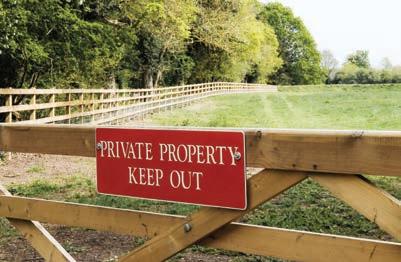
STEPS TO STAY SECURE
• Install CCTV cameras to watch over the most vulnerable areas of your property.

• Consider using earth banks, ditches, large tree trunks and rocks to prevent access.
• Install security lights that come on at dusk and turn off at dawn.
• Put in reinforced gates to protect against ram-raids.
• Establish a single gated entrance and exit.
• Join a Farm Watch Scheme.

From fly-tipping to theft of machinery and livestock, rural crime is on the increase. Jack Edwards explores the measures landowners can take to stay secure
Jack Edwards
Salisbury 01722 420974
jedwards@symondsandsampson.co.uk
Just how can a business work towards protecting itself? Here are just a few measures that you could consider:
73
For the Love of Tractors
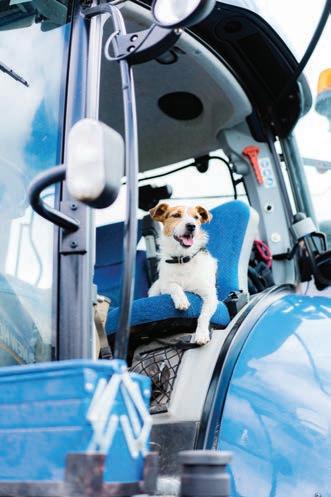
My grandfather was a tenant farmer in Gloucestershire and I have grown up with stories about what life and farming was like when he was a young man in the 1930s, 40s and 50s.
Perhaps this is where I get my interest in vintage tractors. From a young age I was desperate to buy one and after many a summer’s harvest saving up the pennies, I bought my first when I was teenager – a Fordson Dexta, one of the tractors that Grandpa and his three sons regularly used.
After this initial purchase the obsession really set in, and I now find myself with three tractors including a Nuffield Universal 4 (the tractor that no one else but Grandpa was allowed to drive) and a Ford 4000 (currently having her engine rebuilt – very slowly).
I love the simplicity of these machines – no GPS, or ‘autoquad ecoshift transmission’ (whatever that is). They were built for functionality.
During the Second World War, the Ford Motor Company produced around 70 Fordson Model N tractors per day from its Dagenham factory. It was the tractor that quite literally fed Britain during our darkest hour. In true wartime fashion they were painted dark green instead of the previous orange, and when steel was in short supply, they simply used less of it – making the wings narrower.
I feel an empathy with the history surrounding these tractors, whether there is a personal connection or something quirkier. On my travels around Dorset I have come across some fascinating tractors, including one used by Pinewood Studios to tow pieces of the set around during filming of James Bond movies, and another which towed bombs across an airfield in the Second World War.
For others, the interest is more about reliving their younger days by buying a tractor they drove ‘back in the day’. This can seem odd, especially when one considers how glad they must have been at the time to get shot of the old girl in favour of the newer, more luxurious model. But nostalgia can be a powerful thing.
Then, of course, there are the serious collectors. These avid aficionados will spend a lifetime amassing machines from a particular brand they love – in some cases, hundreds and hundreds of them. In 2015, one such enthusiast sold his collection of 230 tractors for over £2m.
Whatever the motivation for owning one, I find there is great satisfaction in keeping these machines running whether it be to take them to shows, on road runs or simply to load up your friends in the trailer and trundle down to the pub for Sunday lunch.

Are you bewitched by a John Deere? Fascinated by a Ford or Field Marshall? You’re not alone. Tractors hold a place in the heart of many, including our own Nick Rymer
I bought my first when I was teenager – a Fordson Dexta
74
Rymer’s Rally Returns
Back for a second year, Nick Rymer’s charity tractor rally raised plenty of smiles – and £3,000 for good causes

Rymer’s Rally, the charity tractor run which debuted in 2017, returned for a second year at Wimborne St Giles on 27 May. After a successful first year, which raised £2,600, the 2018 rally was a roaring success – raising an impressive £3,000. The event attracted 250 people and more than 50 tractors for a tour of the stunning Shaftesbury Estate.

After the tractor run, participants and passengers returned to a delicious BBQ and bar, and enjoyed the glorious sunshine while listening to live music provided by the 524 Band.
The organisers, Nick Rymer and Immy Robinson, were delighted at the result and thanked all those who made it a great success – the BBQ team, volunteers who marshalled and sold raffle tickets, and of course all those who attended.
“We tried to keep everything as local as possible this year,” explains Nick. “We had burgers and sausages from Clarke’s butchers in Sixpenny Handley, beer from Sixpenny Brewery, and of course Cranborne Chase Cider, which proved hugely popular on such a hot day!
“We were also given some fantastic raffle prizes including a hamper from Home Farm Shop in Tarrant Gunville, overalls from Smart Agricultural Services and a load of logs from the Wood Shed, Wimborne.”
Sincere thanks must go to the Earl of Shaftesbury for

allowing us to tour his estate and historic parkland, the Rymer family, the NFU for insuring the event and to the Symonds & Sampson staff, their families and friends who pitched in to make the day such a success.
All money raised will be split between Ducks and Drakes – a charity promoting awareness of bowel cancer in the young –and Future Roots care farm.
If you missed out on this year’s rally, fear not. We will be back for more fun and games in 2019!
Nick Rymer Wimborne 01202 639403 nrymer@symondsandsampson.co.uk
75
Dairies with a Difference
From a dairy where cows are milked in the open air, to one that’s home to 2,500 goats, we profile the farmers brave enough to try something new
The Open Air Dairy
Will Wallis and I planned our visit to Tom Foot at Longlands Farm, Littlebredy, to coincide with the end of morning milking. A rather large herd of cows was patiently waiting in front of the parlour; no activity within the parlour, and no cows heading away for a day’s grazing. The generator had broken. “Oh hell,” said Will, “We’re the last people Tom is going to want to see now!”
But just a few minutes later, an unruffled Tom came out of the ‘power house’. As puffs of black smoke from the standby generator cleared, we could see that two milking bales were up and running and The Open Air Dairy swung into action.
Tom Foot and Neil Grigg met at the Seale-Hayne faculty at Plymouth University where they both studied agriculture.
In 2009 they took the view that as cows offered an appreciating asset and the opportunity to create a balanced business/family lifestyle, they would invest in calves.
As the tenancy didn’t have buildings suitable for a dairy, nor allowance for improvements to the existing buildings, the duo initially hired two milking bales and, by 2012, The Open Air Dairy – the only large-scale dairy farm in Europe to milk cows in the fields – was under way.
Working with local agricultural engineers M J Fry, they have designed and built the two milking bales currently used, which sit alongside the shipping container housing the generator. A 16,000 litre tank mounted on a massive ex-military truck then takes the milk back to the main yard for collection.
The field equipment is moved to new ground most days, allowing cows to peacefully graze while waiting to be milked, before heading to the next pasture.
The Open Air Dairy is the only large-scale dairy farm in Europe to milk cows in the fields

The breeding programme behind the current 700-strong herd of milking cows is a combination of Jersey, Longhorn, Ayrshire, Golden and Holstein crosses, producing a fairly light animal of around 450kg, and producing on average 4,500 litres per head.
In 2011 they secured the tenancy of the 1,000-acre, thenarable Longlands Farm as the home for their dairy venture.
Calving is in March to April, and heifer calves are reared by Neil on the Killerton Estate at Broadclyst, while bull calves are
 Tom Foot
Tom Foot
76
reared locally – mostly by ‘Longhorn Jim’ – provider of the 15 bulls contributing to the breeding programme.
Within the yard is a huge expanse of covered barn, with a clever system of pipework to enable easy feeding of calves until they are weaned.
There are up to 10 staff employed on the farm, six full-time. Their WhatsApp group is central not just to logistics, but also enables each person to share observations, comments and suggestions vital to a good communication structure.
Progression by the entrepreneurial duo has been rapid.
Childhay Manor
The Frost family has farmed at Childhay Manor in West Dorset since the 1940s. The name is perhaps best known for Childhay Ice Cream, established in 1981 by Tim and Monica Frost and sold in 1995.
The buildings at Childhay are now home to another dairy by-product venture – Black Cow Vodka, distilled through milk and manufactured by local farmer Jason Barber.
Childhay Manor is also home to a contract farming partnership with Stephen Raymond. The organic dairy milks 350 cows off 600 acres, with a new parlour installed in 2015.
However, Will Frost, the third generation of the family to farm here, has ventured into pastures new and established a second contract farming partnership with Forde Abbey Estate at nearby Thorncombe.

He began rearing goats at Forde Grange Farm in 1996 and, in 2007 entered into a joint venture with the estate to install a new parlour and buildings and upscale production to what is now the second largest goat farm in the country.


The estate grows maize, wheat and grass to supply the goat enterprise; 2,500 goats are milked three times a day in a fully automated 80-point rotary parlour with automatic animal ID and yield recording at each milking.
The long-standing, loyal and committed staff of four full-time and 10 part-time workers are essential to the venture, which includes a carefully managed breeding and rearing enterprise spanning Forde Grange and Childhay.
A third milking bale has been built and sold to the Kingsclere Estate, which Tom maintains, and will shortly be milking 400head of dairy within their arable/herbal lays grass rotation.
The Open Air Dairy cheese was first made locally at Ford Farms in 2016 while the milk price was low, and over 10 tonnes has now been made. We tried it and highly recommend it. You’ll find a list of local stockists at www.openairdairy.co.uk, but note that Harrods and Selfridges have recently been to see the farm and sample the cheese, so watch this space.
Batch kidding takes place four times a year and is managed by Will and his wife, Kate. Two kiddings follow natural trends, two use artificial light treatment and melatonin implants to induce the goats into season and ensure consistent milk production throughout the year.
Around 500 goats kid each March, June, August and November. The kids are weaned swiftly and moved to climate-controlled kid buildings where they are reared; six months later, the nanny kids join the milking herd. The bucks are then sold to Cabrito, an award-winning Axminster-based company established in 2012 by James Whetlor selling kid meat to top restaurants throughout the UK
The average yield is 1,100 litres per goat per annum, and the milk is sold to Delamere Dairy for either bottled milk or for cheese (manufactured locally by Ashley Chase).
The goat enterprise is intensive. The closed herd is micro-managed with meticulous attention to hygiene and a focus on efficient breeding and monitoring to ensure the highest standard of health and yields.
Records of milk production per animal are used not only to monitor and maintain yields, but the genomics of the bucks are submitted to a US-based programme where their DNA is analysed against a pool of 3,000–4,000 goats internationally and ranked on feed, udder, butterfat, protein and yield statistics. These rankings ensure that the best billies are reared and used in the breeding programme.
So, what does the future hold? Will is optimistic; the goat enterprise is funded purely by milk sales, with no subsidies. Demand for milk is high, and his pro-active relationship with Delamere opens doors to the global market.
Sally
Reid Poundbury 01305 571274 sreid@symondsandsampson.co.uk
The goat enterprise focuses on efficient breeding and monitoring to ensure the highest standard of health and yields
Will Frost
Daisie Frost
77
A Family Pilgrimage

My family has longstanding connections with the army on both maternal and paternal sides, so celebrating the centenary of their achievements and commemorating their lives has been a feature of the last four years.
By 1918, the last two remaining relatives serving on the Western Front were my paternal grandfather, Maj Robert Staveley, and my maternal great-grandfather, Maj Gen Tom Lambert. In the course of researching our family connections to the Great War it became apparent that, amazingly, they served very close together on a number of occasions.
The 100 Days Offensive
The armistice was the immediate outcome of one of the greatest feats the British army has ever been engaged in –completing in just under 100 days the operational and tactical defeat of the German army.
My great-grandfather Maj Gen Tom Lambert commanded one of the 13 assault divisions, the 32nd Division, which stormed the Sambre-Oise line to evict the German army from its last defensive positions inside France and, leading up to this, the fighting at Amiens, crossing the Somme River and breaking the Hindenberg Line. The photo above shows the next generation sitting on the wall which marks the Hindenberg Line.
Between the Hindenberg Line and the Sambre-Oise, his division liberated a number of towns which had been under German occupation since 1914 and his diaries show the impact of pursuing a dangerous enemy while simultaneously coping with the demands of a starving and mistreated population.
The operation against the Sambre-Oise was a desperately fought action. His soldiers had to man-handle heavy and awkward improvised bridges to the edge of the canal across German obstacles, then assemble the bridges before pushing them across the water-gap, which the Germans had filled with barbed-wire. Throughout, the division was subject to concentrated machine gun fire from positions on the far bank.
Across the whole British front, seven Victoria Crosses were
won in this operation. Four of them were awarded to members of 32nd Division. The cost of this final battle was high; 32nd Division started the 100 days with close to 12,000 men. Despite several drafts of replacements, after the Sambre-Oise it could muster fewer than 8,000.
We conducted a family pilgrimage to follow the footsteps of the two relatives we knew to have been involved in the 100 days and to honour the memory of their men who did not survive. We traced the paths taken by Maj Gen Lambert, GOC 32nd Division, and Maj Robert Staveley, Battery Commander of Q Battery, Royal Horse Artillery. We were able to follow their units from Amiens to the Sambre-Oise and to focus on the occasions when their accounts coincided.

The Hindenberg Line
The first of these was at the breaking of the Hindenberg Line when Q Battery guns crossed the famous bridge at Riqueval to support 32nd Division’s operations to clear the Germans from villages on the far side. Robert wrote in his diary a touching account of the death of 2Lt Agar, a 19-year-old officer in his battery. Agar was killed close to the bridge while “duelling” with a German anti-tank gun. We got the sense from his diary that Robert had taken Agar’s death hard.
Anabel Merriman commemorates the lives of her relatives serving on the Western Front
Anabel Merriman and three generations of her family
We were able to follow their units from Amiens to the Sambre-Oise and to focus on the occasions when their accounts coincided
78
Robert had been a 19-year-old subaltern himself only four years before, winning a DSO on the retreat from Mons. By 1918 he was an experienced officer who had fought in all the war’s great battles, but he was still a young man of 23, carrying responsibility for the lives of nearly 200 men (and about the same number of horses). We searched out 2Lt Agar and read a poem over his grave.
can… work strenuously, play strenuously and see that you never waste time. Learn to make yourself attractive to others and help them in every way you can.”
He reminisced about “5th November fireworks in the old days at Woking” and then said he was off for another kind of fireworks the next day.
He clearly did not have time to finish the letter before the battle began as there is a postscript on 4 November at 1pm which says: “The battle started at 5.45am and has meant very heavy fighting so far as my division is concerned, but we are well across the canal and have gained another victory all right, I think.”
Q Battery also supported 32nd Division’s crossing of the Sambre-Oise and, as far as we can tell, was supporting the brigade in which the VCs were won.
And we can also plot their close engagement at the town of Bohain, liberated on 10 October 1918 from four years of occupation. We visited this lovely French country town on a sunny Sunday morning, where we stopped by the church to read Robert’s diary, and 32nd Division’s more formal account of the liberation.
It seems that the citizens were treated to a parade (32nd Division had a Scottish regiment within it and so pipers) and Robert, along with others nearby, marched through the town to the adoration of the locals.

This sketch of the Sambre-Oise canal crossing was done by Maj Gen Lambert’s ADC to explain why the casualties were so high in this action

Pilgrimage end
Our pilgrimage ended in Le Cateau, a fitting place to draw together the thread of the 100 days and also the Great War. Le Cateau was the site of a major 1914 battle where the British army had chosen to stand and fight the Germans after close to two weeks of retreating from the initial fighting at Mons.
For Maj Gen Tom Lambert and Maj Robert Staveley, their war ended very close to where it had begun; they both fought their last engagements within a handful of miles of their first. They would no doubt have reflected on the immeasurable distance of four years between these events and the friends and colleagues they had lost along the way.

While Robert came through the war unscathed (earning a DSO and five mentions in despatches), Tom Lambert was seriously wounded commanding his battalion and fought the rest of the war with only one lung.
Our final duty was to reflect on the lives of these two gallant officers. Robert went on to do it all again. In 1939 he was part of the second British Expeditionary Force, and fought throughout the Second World War until he was captured as a Brigadier in Italy in 1944.
Immediately after the armistice, Tom Lambert was part of the forces sent to help with the reconstruction of Belgium and then garrison Germany. In 1921 he was commanding the British brigade in Dublin when he was ambushed by Irish Nationalists as he returned from a tennis meeting. He was shot and killed in the car alongside his wife, who was driving.
Having followed the course of the fighting from Amiens, we were at the Sambre-Oise for the 4 November centenary of this exploit.
The eve before battle is a popular time for reflecting on what is most important in life. On 3 November, Maj Gen Tom Lambert penned a note to his youngest son, my grandfather, then at Charterhouse, advising him to “learn everything you
I sometimes wonder if at my parents wedding my father’s father, Robin Staveley, said to my mother’s father (also Maj Gen) Lambert “I knew your father in the war….”
Anabel Merriman Sturminster Newton 01258 473766 amerriman@symondsandsampson.co.uk
 Air-photograph provided to GOC 32nd Division to show the Hindenberg Line position. 2Lt Agar was killed supporting an attack on Nauroy
32 Division liberating Bohain, 10 October 1918. Maj Gen Lambert was entertained by the town dignitaries with wine they had buried in 1914. Maj Robert Staveley also joined the parade
Air-photograph provided to GOC 32nd Division to show the Hindenberg Line position. 2Lt Agar was killed supporting an attack on Nauroy
32 Division liberating Bohain, 10 October 1918. Maj Gen Lambert was entertained by the town dignitaries with wine they had buried in 1914. Maj Robert Staveley also joined the parade
79
Contract Farming Agreements
Contract farming is a joint venture whereby the farmer provides land and buildings and the contractor provides labour, machinery and power. Contract Farming Agreements (CFAs) are mainly used on arable land, but can also be applied to livestock enterprises including dairy. CFAs provide more flexibility than tenancies and may be appealing to those in the following situations:
• Wanting to expand without requirement for large amounts of extra capital.
• Wanting to reduce capital tied up in machinery.
• Wanting to cut down on physical farm work or looking to retire.
• New investors wanting some involvement and the tax advantages of land ownership, but who do not have farming experience.
Kingsdon Estate, Somerton
Here in Symonds & Sampson’s Yeovil office, we were delighted to offer 806 acres on the Kingsdon Estate near Somerton to be let on a six-year contract farming agreement, commencing 1 October 2018.

This was a rare opportunity for a local farmer looking to take on such a substantial amount of arable ground. The contractor chosen was to provide labour, machinery, crop management expertise and crop marketing.

The land itself is mainly classified as grade 3 with some smaller areas of grade 4, with a mixture of lime-rich loamy soils and clayey soils. The farming system has been standard arable rotation, including wheat, barely, oilseed rape, beans and maize with typical yields for the region.
Risks
Agricultural property relief from inheritance tax on the farmhouse should be considered carefully, especially following the recent Fyffe v Esslemont [2018] case. Care should be taken in how the agreement is drafted and operated, and advice should be taken from professionals.
The agreement should be kept as simply as possible with any changes being documented as you go along. Regular meetings between the farmer and contractor are essential, as are regular reviews of the agreement.
Following an extensive marketing campaign, viewing days were carried out to give prospective contractors the opportunity to see what was on offer. The viewing days confirmed the level of interest in the land and 16 tenders were received.
We were delighted with the keen appetite for the contract farming opportunity at Kingsdon, and are confident this offers the best type of agreement for both farmer and contractor.

Greg Ridout on why CFAs can be the ideal solution for both farmer and contractor
Greg Ridout Yeovil 01935 382909 gridout@symondsandsampson.co.uk
CFAs provide more flexibility than tenancies
80
Let’s Talk Land Rover
He’s a Partner in our firm, an expert on all things agricultural and our go-to guy for renewable energy matters. But A-J Monro is best known for his love of the Land Rover Defender

Prior to the Defender, the original version known as the Series 1 had an 80” wheelbase and was first produced in 1948 with 50bhp at the grand price of £450 (equivalent to £15,550 now). The first one ever produced was the famous ‘HUE 166’ known as Hughie, which a friend of mine has had the pleasure of driving and is believed to now be valued in excess of £1m for insurance purposes. His comment was: “I never expected the most expensive car I would ever drive to be such a bag of rusty bolts!” Possibly an unfair comment, but nevertheless Land Rovers were never meant to be an item of luxury.
In contrast to the Series 1 at £450, one of the most expensive Defenders was sold at £400,000, being the 2 millionth Land Rover ever produced and having 121bhp. A dramatic price increase for an additional 70bhp.
Personally, I have had the pleasure of owning seven Land Rovers so far:
• E reg 90 short-wheelbase turbo diesel hard-top
• C reg 90 short-wheelbase 200Tdi County
• D reg 90 short-wheelbase naturally aspirated hard-top
• M reg 90 short-wheelbase 300Tdi County
• V reg Freelander 2
• 02 reg Discovery 3
• 52 reg 110 Td5 County

From the above list, my favourite by far is the current Defender 110. It has an ‘Alive Tuning’ kit, taking it up to 155bhp and helping it pack a punch. The traditional front seats have been replaced with Discovery HSE fully electric seats, which provide an element of comfort never previously seen in the Defender, along with many other refinements.
The versatility of the Defender and its classlessness is renowned and its ability to take numerous bolt-ons transforms the basic truck into the most capable expedition vehicle. It is said the Defender has been seen in more countries throughout the world than any other vehicle, and that approximately 80% of Defenders ever built are still on the road today.
Over the years, I have pulled countless Japanese pick-up trucks out of a muddy spot – but I have never had a Japanese
pick-up have to pull me out! Testament to the unrivalled abilities of the Defender.
The Defender’s reliability is the one thing that makes you fall in love with it and while you can rely on the fact that something will inevitably go wrong with it, like a trusty Labrador, you will love it regardless, if not more so, because of its little quirks.


It has been a great friend to the family, towing our overland camping trailer on holiday, and I have become so obsessed with the machine that I even made a cake in homage!
Seek me out, especially at the point-to-points where my trailer becomes a mobile kitchen for the day, and let’s talk Land Rover.
Rules of the Road
As a Defender driver, please remember the following rules:
1. You must always salute another Defender when driving.
2. You must always stop and help a broken-down Defender.
3. PRA (parking rules apply) you must always park next to another Land Rover where possible.
Andrew
(A-J) Monro Wimborne 01202 639408 amonro@symondsandsampson.co.uk
81
Farm Succession
Do Common Agricultural Policy (CAP) subsidies make up a large portion of your farm income?
The Agricultural Bill is currently progressing through Parliament and sets out proposals to replace the current subsidy system of direct payments with a new Environmental Land Management System (ELMS) as part of Brexit.
No longer will farmers be paid according to the amount of land farmed. Under the proposed new system, farmers and land managers who provide the greatest environmental benefits such as improved air, water and soil quality, increased biodiversity, climate change mitigation, cultural benefits and better protection of the historic environment, will secure the largest financial rewards.
There is a planned seven-year transition period to allow farmers time to adjust, and the environment secretary, Michael Gove is quoted as saying “we will also provide the smooth and gradual transition that farmers and land managers need to plan ahead”.
Payments may also be available for farmers to invest in new technologies and methods that boost productivity. ‘Delinked’ direct payments would allow businesses to invest, diversify and adapt.
What should you do?
Times of great change can offer great opportunity. Start talking about succession planning – not necessarily retirement but creating a long-term plan for the farming business.
Succession planning can be a neglected topic. It is often complicated and sensitive, the result being many farm businesses do not have a plan at all.


New legislative changes are going to force farmers and landowners to adopt new ways of working. It is therefore essential farmers equip themselves and their successors with the necessary experience and skills to adapt.
Business management professor Leon Megginson paraphrased Darwin by saying, “It is not the strongest species that survives, nor the most intelligent, but the one most adaptive to change.”
The fine detail of the new policy direction is still unknown, but in relation to the Basic Payment Scheme (BPS), we advise clients to start preparing their budgets excluding the direct payment element.
Other key topics to discuss with family, business stakeholders and professional advisers include tax –principally inheritance tax and capital gains tax – pensions and investments, and a time frame.
If you want to be one step ahead and ensure your business remains viable in the near future and potentially for generations to come, contact the rural professionals at Symonds & Sampson.
It is not just about retirement. It's about the long-term plan to protect your assets, your business and your family. Annabel Douglas has advice to help farmers stay one step ahead
It is often complicated and sensitive, the result being many farm businesses do not have a plan at all
Annabel Douglas Axminster 01297 33122 adouglas@symondsandsampson.co.uk
82
Robocrop
It seems that technology has invaded every area of modern life, both globally and within the agricultural sector. In the 1950s and 60s, farmers were operating Massey Ferguson 35s. A decade later saw the introduction of safety cabs. The 1980s brought air conditioning, the 1990s saw the era of electrics, and since the turn of the century we have seen the introduction of GPS guidance – not bad considering only 100 years ago, we had only just started driving cars!


Precision farming using GPS and geographic information systems (GIS) has now become common place, particularly within the arable sector and for contractors – not only producing those perfectly straight crop tramlines seen throughout the countryside, but also allowing famers to work during low visibility. They map their fields for yield and soil characteristics and have the choice to use variable rate applications of crop inputs.
The next generation is already under way. Machinery manufacturers including John Deere, AGCO under the Fendt brand and Case IH are developing driverless tractors, with all parties believing self-driving tractors or robots will revolutionise the farming industry within the next decade.
Dutch firm Lely, one of the pioneers of the milking robot back in 1992, has recently launched its fifth-generation version and is struggling to keep up with demand. It shows that farmers are willing to give the technology a chance.


Many farmers are basing their decision on a combination of reasons which include labour, more sociable hours, improved family life, increased production, better milk quality, cow comfort and fixing costs. And it’s not just robotic milking; other technologies on the market include automatic feeding, a robotic feed pusher, automatic calffeeders, scrapers, and so on.

It’s not only tractors. Other robots known as ‘agribots’ or ‘ag robots’ within the industry are being developed for every farming sector. The recent RDPE Countryside Productivity Scheme grants have encouraged farmers to adopt these new technologies, with dairy farmers able to apply for funding for robotic technologies to assist with milking.
For some, milking will always be carried out down in a pit or on a rotary platform. But one thing’s for sure –robotic technology is here to stay.
From driverless tractors to automatic calf-feeders, robotic technology is the future of farming, says Greg Ridout
It shows that farmers are willing to give the technology a chance
Greg Ridout Yeovil 01935 382909 gridout@symondsandsampson.co.uk 83
Go with the Flow
Septic tank regulations. It’s not many people’s idea of a scintillating subject, but if your property has a septic tank, or you’re buying a property that has one, a deadline in the law means you’d be wise to read on, says Jeremy Cozens

Given the health risks and environmental issues that a malfunctioning septic tank can cause, it’s understandable why the government places strict regulations on their proper upkeep. The environmental permitting regulations came out in 2015 creating general binding rules which set conditions for domestic septic tank use without a permit. But that’s all set to change.
In a nutshell, if a septic tank is discharging into a watercourse, as opposed to an infiltration system, then it will need to be improved or replaced by 1 January 2020.

And if you are planning to sell before this date, you should have an audit of the system carried out and establish if it needs upgrading. If it does, it needs to be done before you sell, or in negotiation with the purchaser.
What can you do?
This could involve creating a new infiltration system, installing an approved conversion kit, installing an approved aerobic treatment plant system or even connecting to a main sewer if one is available nearby.
The Environment Agency will advise on specific cases and we recommend that the local authority is consulted to confirm whether planning permission and building regulation approval will be required.
It is my experience that many people moving to the area are not prepared for living with a septic tank, so systems have not been properly designed or managed and have been adapted incorrectly.
It is recommended that systems have a full professional appraisal by a specialist before purchase because of the possibility of significant expenditure to rectify any problem or install a completely new system. The worst scenario being when the only option available is to install a sealed cesspool (with no outlet) emptied regularly by tanker. This would be a very costly option.
But never fear. The team at Symonds & Sampson are here to guide you through what the regulations mean for you, and what the best option is for you and your property. Call into any of our offices and we’ll be happy to help.
Jeremy Cozens Wimborne 01202 639401 jcozens@symondsandsampson.co.uk
84
Bill Meaden established Cranborne Chase Cider in 2011 in Minchington as a hobby on the family farm to run alongside his other two jobs as a brewer at a local micro-brewery and a fabricator at a forge. Using his skills as a fabricator he created his own cider press and in the first year produced 6,000 litres of strong cider; many customers claimed they were floored by just one pint! However, as they gained experience the cider became more refined and demand increased. Almost all of the apples used come from the farms own 50 tree orchard and there are plans to plant many more in late 2018.
From 2013 the famous ‘Last of the Summer Cider’ festival has been held yearly on the farm and Bill attends shows and events with his mobile shepherd’s hut bar, ‘The Cider Shack’, spreading the word about his scrumpy and winning numerous awards.
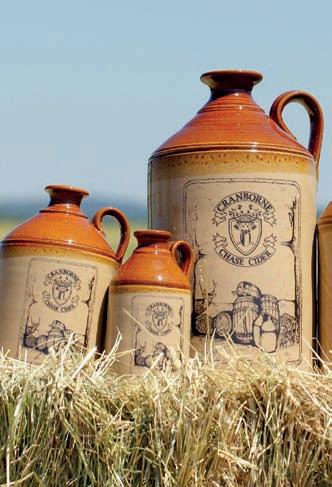
By 2015 the business had tripled in size and cider making became Bill’s fulltime job. By 2016 bottled cider had arrived on the shelves and since 2017 the Original Cider Shack has become a small on farm shop which, alongside the cider, supplies other fresh produce; pumpkins in October, jams, chutneys and free range eggs.

So if you see a large ‘CIDER’ sign near Blandford, be sure to pop in and try a sample.

E: cranbornechasecider@gmail.com T: 01725 552715 W: cranbornechasecider.co.uk
THE TEAM
As a firm we’re made up of a host of different people, with a variety of specialisms, working hard for all our clients. Their common ground? Emotional intelligence, a sense of fun and a team ethos.








With personality, professionalism and a relaxed, friendly outlook, they’ll work with you as a trusted partner. In today’s market, they’re a breed apart.

AND FINALLY
This way for charity news and – everyone’s favourite – photos from the shows. Our staff pick their desert island discs and favourite books. We keep track of our iconic Symonds & Sampson bags as they take up their positions in people's homes as handy storage for everything from clothes pegs to wellie boots - what do you keep in yours?

THETEAM
Asafirmwe’remadeupofa hostofdifferentpeople,witha varietyofspecialisms,working hardforallourclients.Their commonground?Emotional intelligence,asenseoffunand ateamethos.


Plus, there's a look at the modern-day WI – so much more than jam and Jerusalem – and a round-up of our local country markets.
Withpersonality, professionalismandarelaxed, friendlyoutlook,they’llwork withyouasatrustedpartner.
Intoday’smarket,they’rea breedapart.
Wow-WI!
Think the WI is all jam and Jerusalem? Think again, advises Caroline Childs-Chaffey
The WI was formed in 1915 to revitalise rural communities and encourage women to become more involved in producing food during the First World War. Since then, the organisation’s aims have broadened and the WI is now the largest voluntary women’s organisation in the UK.
Non-judgmental friendship is as important to the WI as education, but the WI plays a unique role providing women with educational opportunities and the chance to build new skills and to campaign on issues that matter to them and their communities.
There has been a feeling that members of the WI, who number 220,000 in 6,300 locations, have in the past been patronised and stereotyped, but they are spirited, remarkable and inspirational.
As Germaine Greer once said, “I like the WI when they are angry” and their reaction to an address at their annual conference by Tony Blair when they slow hand-clapped him was brilliantly impromptu.
The organisation has just celebrated 100 years of campaigns, speaking up on everything from equal pay to climate change, identifying gaps in the midwifery workforce to the plight of the honey bee. The WI has always been at the forefront of the debate and members are currently part of the war against plastic in our oceans and waste by supermarkets, while also tackling loneliness and mental health in the community.
Activities
As well as the wealth of activities run by each WI, you’ll find opportunities to learn new skills on day schools and short courses at Denman, the WI’s centre of learning.
Set in Marcham, near Oxford, the Georgian mansion and 17 acres of grounds provide a relaxing environment for learning. Denman includes something for every interest – from curries, cakes and crochet to papercutting, photography and Pilates – and the courses are designed to cater for the complete beginner to the more accomplished practitioner.
Everyone is welcome – men and women, members and non-members – and they can even cater for groups of friends. For more information visit, visit www.denman.org.uk
Join the fun
Lifelong friendships have been formed, so why not give it some thought and join your local WI? You can find out more online at www.thewi.org.uk or alternatively, all our offices have a WI in their town so please ask a member of the Symonds & Sampson team and they will point you in the right direction. It could open up a completely new life for you.
Country Markets
On the lookout for something to do in your area? A visit to a country market could be just the thing


Country markets aim to encourage visitors to discover the diversity and deliciousness of local British homemade baked goods, preserves, garden-grown fruit and vegetables. They also showcase the skills and talents of local craftspeople and artists. Producers pride themselves on the quality of their produce and the friendliness of their markets, many of which have become popular, lively meeting places.
There is a network of about 300 country markets across England, Wales and the Channel Islands, with many being held in our area, including Axminster, Bridport, Dorchester and Sherborne. You’ll find a full list and more information at www.country-markets.co.uk
 Caroline Childs-Chaffey Bridport 01308 861940 ccchaffey@symondsandsampson.co.uk
Caroline Childs-Chaffey Bridport 01308 861940 ccchaffey@symondsandsampson.co.uk

88
How to Host a Successful Charity Auction
What are you raising money for?
Make sure it is relevant and will get the support of the public, and then target your audience.
Think of the venue
The hall or marquee may be beautifully laid out and ideal for getting as many tables in the room, but it could be an awkward shape for an auctioneer. There may be pillars or walls in the way, meaning bidders can’t see the auctioneer and, more importantly, he can’t see them. Less chance of spotting bids means less money raised for the charity.
Don’t put the auctioneer in the middle of the room
On the same note, trying to spot bids behind you is impossible.
Get a first-class sound system
Uncle Bob’s karaoke machine might be great in your living room, but hopeless in front of a crowd. Sourcing a decent microphone is essential as bidders will soon lose interest when they can’t hear what is being sold.
Get a projector for the lots
This will remind everyone what is being sold and draw attention to the lots.
Source interesting lots
Try to get something unusual – tickets to sporting events are always popular. If it is a holiday, provide information about flights and what it might cost if you booked it outside the auction.
Advertise!
Sometimes this is forgotten in all the excitement of sourcing the lots. Mentioning the event to a few people with the odd poster in a shop window will not bring in the buyers; and you need buyers. We have all been at an auction where the only people present are the ones who donated!
Don’t get too many lots
If the event is only a small part of the evening, then 10 lots is enough. A silent auction can be the outlet for other donations. If the auction is the main event, try to limit the lots and think how many people will be supporting. See above about advertising.
Give people prior notification about the lots
If it is a lot where a number of people could club together and bid, such as a holiday home, give them time to get organised.
Symonds & Sampson’s auctioneers have helped raise many millions of pounds for charity over the years, but some events have been better organised than others. Jim Rowe has some tips for anyone organising a charity fundraiser.
Get people in the room who will spend money
Sourcing great lots and then offering them to people with modest funds will not work. Invite some big hitters and try to manipulate some competition.
Remember gift aid
If you are raising money for charity, make sure you have gift aid forms as this will add to the total raised.
Have a team to spot the bids, clerk and collect the money
The auctioneer can’t do it all and a romantically lit ballroom makes it difficult to see who is bidding. We will never remember who bought each lot without some sale sheets.
Think about the time of the auction
You may be more likely to raise money in the evening, after everyone has enjoyed a few glasses of wine, than at an afternoon tea party. If it is an evening dinner, start the auction during the pudding course while everyone is still sitting down.
Meet the auctioneer a few weeks before
To discuss the lots and the order of sale.
Don’t expect the auctioneer and his partner to pay for their tickets
The auctioneer is ‘singing for his supper’ and has had to prepare for the auction, stayed sober and give up his evening to be the auctioneer. He is free of charge and so are his two tickets!
And a plea from the heart: never criticise the auctioneer
Just remember that we did not organise the event, we may not have even been consulted. So, when the microphone is hopeless, or we missed a bid because we were trying to pirouette around 180 degrees to identify interest from the centre of a dimly lit marquee, spare us a thought. Or, of course, you could always take over the microphone and do a better job yourself!
 Jim Rowe Bridport 01308 459564 jrowe@symondsandsampson.co.uk
Jim Rowe Bridport 01308 459564 jrowe@symondsandsampson.co.uk
89
Next Generation







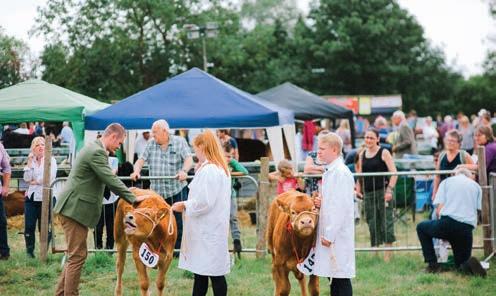
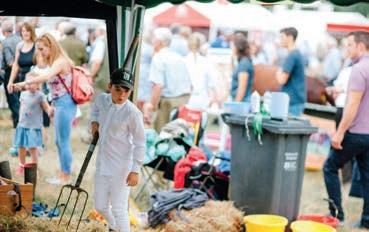
90
90
Axe Vale Show





















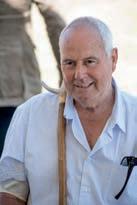




91
Show Date 2019 22–23 June
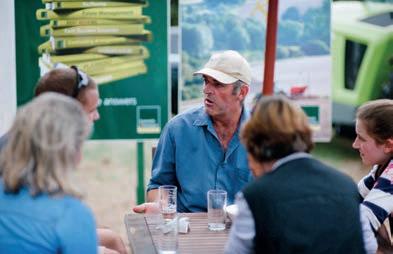









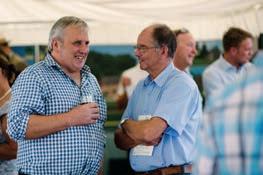









92
Honiton Show

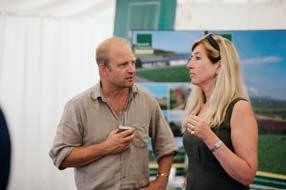

















Show Date 2019
August

93
1

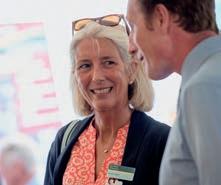










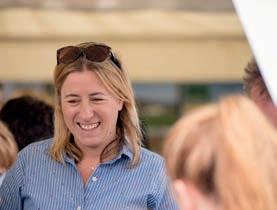





94
Gillingham & Shaftesbury Show

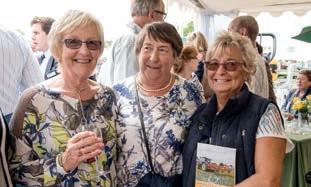






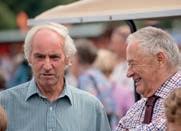









Date 2019

95
Show
14 August

















96
Melplash Show














Date 2019

97
Show
22 August














98
Dorset County Show









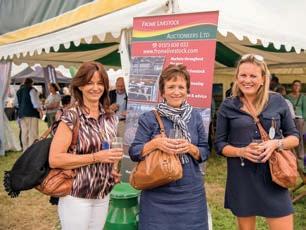




99
Show Dates 2019 31 August–1 September
Green Eggs and Ham by Dr Seuss. That Sam-I-am! I do not like That Sam-I-am! Do you like Green eggs and ham? was “read” back to me long before my children could read but these bedtime stories taught them rhyme. The character did in the end turn out to like Green Eggs and Ham so it is a moral tale to try new things (and to eat your greens). Fond memories.
Jan Merriott
We Didn’t Mean to Go to Sea by Arthur Ransome –probably the book that inspired me as a small boy to become a keen sailor in later life.
Nigel Sheppard
My Family and Other Animals by Gerald Durrell.

I couldn’t believe that people lived like that, there were laugh out loud moments. Steve Allen
Jamaica Inn by Daphne du Maurier. The book reminds me of Bodmin Moor - my maternal grandfather farmed high up on the moor close to Jamaica Inn and as children we spent long summer holidays there. Many nights too in locals bar at Jamaica, feeling lucky to be allowed out so late and listening intently to tales of the moor and its stoic residents.
Brave New World: Inside Pochettino’s Spurs by Guillem Balague. Hard work, dedication and managerial methods, a real insight into what it takes to reach the highest level. Some of the personal stories are inspirational. A must read for this avid Spurs fan!
I have a dog-eared copy with hand written notes from my A levels. A real antidote to the depressing Thomas Hardy that was on the same syllabus. Mark Lewis
Jane Eyre by Charlotte Bronte
Essentially a great gothic love story full of dark secrets, passion, tragedy and ultimately triumph over adversity, full of social history. Christine Dacombe
Moonfleet by John Meade Falkner. Read on numerous occasions I also visited the old church at Moonfleet on which the book is based. If you look carefully, a tidal mark still exists from the great flood at Chesil Beach in the 19th century.
David West
Ross Wilmington
Jon Summers
Cold Comfort Farm by Stella Gibbons
100
Be Careful What You Wish For by Simon Jordan. About his time as the owner of Crystal Palace Football Club, the roller coaster ride becomes utterly gripping Jeremy Smith
The Rose of Martinique: A Life of Napoleon’s Josephine by Andrea Stuart.
A biography about Josephine Bonapart, I love books that bring history to life.
Annabel DouglasBetween the Woods and the Water by Patrick Leigh Fermor, adventurer, war hero and renowned travel writer. In the early 1930s, aged 18, he crossed Europe on foot from the Hook of Holland to Constantinople. Hitler was coming to full power and everything in Europe was about to change forever.
Patrick Woodford
A Thousand Splendid Suns by Khaled Hosseini. A very powerful novel reflecting the challenges faced, particularly by women and children, in Afghanistan which made me cry my heart out during a long train journey. Sally Reid

Fantastic Mr Fox by Roald Dahl.
My mother often read to me after a bath and, like most children, I had an issue with going to bed. Not so with this book! I wanted to go to bed immediately so that I could listen to the next chapter.
Rachael James
Danziger’s Travels ‘Beyond Forbidden Frontiers’ by Nick Danziger. An account of hair-raising adventures on an 18 month journey through Asia, the first foreigner to cross from Pakistan into the closed western province of China since the revolution of 1949. One of my regrets is never taking a journey along the Old Silk Route travelling through the Khyber Pass; sadly no longer on my ‘to do’ list! Richard Taylor
The Great Gatsby by Scott Fitzgerald. One of the greatest opening lines ‘whenever you feel like criticising anyone just remember that all the people in the world haven’t had the advantages you’ve had’. Simon Neville-Jones
A Gentleman in Moscow by Amor Towles.
An engaging mix of historical fact and fantasy. The most entertaining book I have read in some time.
Andrew Carless
101
Andy Wakinshaw
Luxury Item – My fishing rod Book – This is Going to Hurt by Adam Kay Discs – Stand By Me – Ben E King Beryl – Mark Knopfler
So Far Away – Dire Straits Promises – Eric Clapton It’s In the Way That You Use It – Eric Clapton Good Thing – Fine Young Cannibals Jump (For My Love) – The Pointer Sisters Forever in Blue Jeans – Neil Diamond Chloe Hooper
Luxury Item Cider Book Craft Cider Making by Andrew Lea Discs – Lady Godiva’s Operation – Velvet
DESERT ISLAND DISCS Luxury Item – Motorbike (Triumph Rocket) Book – Feel the Fear and Do It Anyway by Susan Jeffers Discs – Ninety-Nine And A Half (Won’t Do) –Creedence Clearwater Revival It’s a Kind of Magic – Queen London Calling – The Clash Mr Blue Sky – ELO Butterfly – Mad Dog Mcrea Club Foot – Kasabian Kings of the Wild Frontier – Adam and the Ants Let’s Dance – David Bowie Tim Bennett Luxury Item – Guitar Book – My Booky Wook by Russell Brand Discs – Thunder Road – Bruce Springsteen 59 Sound – The Gaslight Anthem Holocene – Bon Iver Just A Day – Feeder Slow Dancing in a Burning Room – John Mayer The Chain – Fleetwood Mac I Miss You – Blink 182 Everlong – The Foo Fighters Daniel Magee Luxury Item Record turntable Book Magnum Magnum (photography) Discs – Baba O’Riley – The Who You Can’t Always Get What You Want – The Rolling Stones Teenage Kicks – Undertones I Wanna Be Sedated – The Ramones New Rose – The Damned Butterfly Collector – The Jam I Fought the Law – The Clash There Is A Light That Never Goes Out – The Smiths Simon Neville-Jones Luxury Item A supply of quality wine Book The Lord of the Rings by J R R Tolkien Discs – Common People – Pulp Let’s Dance – David Bowie Zadoc the Priest – Handel One Night In Heaven – M People My Baby Just Cares For Me – Nina Simone She – Elvis Costello Hey Jude – The Beatles Love Goes Down – Plan B Steve Allen Luxury Item Satellite wind up radio Book – Robinson Crusoe by Daniel Defoe Discs – Here Comes The Sun –The Beatles Let`s Dance – David Bowie Cavalleria Rusticana – Pietro Mascagni Rhapsody on a Theme of Paganini –Rachmaninoff In My Life –The Beatles Start Me Up – The Rolling Stones Nobody Does It Better – Carly Simon Beyond The Sea – Bobby Darin
Underground I Wanna be Sedated – Ramones Emma– Alkaline Trio The Last Resort – The Eagles Save the Hammer for the Man – Tom Morello & The Night Watchmen (feat. Ben Harper) Nicotine Lips – The Flatliners Free – Cat Power Drive – The Gaslight Anthem James Shapland Luxury Item – Toothbrush Book – Animal Farm by George Orwell Discs – Rock With You – Michael Jackson Jesus to a Child – George Michael Redemption Song – Bob Marley and the Wailers Man in the Mirror – Michael Jackson Supermarket Flowers – Ed Sheeran Tiny Dancer – Elton John Bring Him Home – from Les Miserables Don’t Stop Me Now – Queen Neal Wilson Luxury Item – Crystal glass nail file Book Little Women by Louisa May Alcott Discs – Nights in White Satin – The Moody Blues Jolene – Dolly Parton Chain Reaction – Diana Ross You’ll Never Walk Alone – Gerry and the Pacemakers Sailing – Rod Stewart Karma Chameleon – Culture Club Angels – Robbie Williams We’ve Only Just Begun – The Carpenters Marlise Jolliffe Luxury Item – Toothbrush with toothpaste Book – The Lord of The Rings by J R R Tolkien Discs – Supersonic – Oasis Insomnia – Faithless Heroes – David Bowie Don’t Panic – Coldplay Processed Beats – Kasabian Under The Bridge – Red Hot Chili Peppers Money For Nothing – Dire Straits Champagne Supernova – Oasis Stuart Phillips Luxury Item – sun lotion Book The Notebook by Nicholas Sparks Discs – Freedom – George Michael Sing – Ed Sheeran Fix You – Coldplay Biblical – Biffy Clyro Hall of Fame – The Script Never Forget – Take That Supermassive Black Hole – Muse Linger – The Cranberries Sam Brown Luxury Item – A massive umbrella for shade Book To Kill A Mockingbird by Harper Lee Discs – Superstition – Stevie Wonder Without You – Harry Nilsson Feel the Need In Me – Detroit Emeralds I Hear You Now – Jon and Vangelis Time To Say Goodbye – Sarah Brightman and Andrea Bocelli Alone – Heart The Great Gig in the Sky – Pink Floyd Where the Streets Have No Name – U2 Diane Denham 102
Luxury Item – Wind up radio Book Robinson Crusoe by Daniel Defoe Discs – Naive – The Kooks
Can’t Stop – The Red Hot Chili Peppers
Sweet Child O’ Mine – Guns N’ Roses Radioactive – Imagine Dragons Hold Back the River – James Bay All Along the Watchtower – Jimi Hendrix Mountains – Biffy Clyro Pompeii – Bastille Chris Drake
Luxury item – Hay fever tablets Book – James and the Giant Peach by Roald Dahl Discs – Seek Bromance – Tim Berg
Don’t You Worry Child – Swedish House Mafia Show Me Love – Steve Angello & Laidback Luke feat. Robin S Dreams – Gabrielle Love and Affection – Joan Armatrading Nobody to Love – Sigma Easy – Porter Robinson Language – Porter Robinson Adam Taylor
Luxury Item – BBQ ... all those fish to grill Book – Deception Point by Dan Brown
– Alive – Pearl Jam Stockholm Syndrome – Muse Get Off Of My Cloud – The Rolling Stones Beat It – Michael Jackson No Need to Argue – The Cranberries Hideaway – De’Lacy
You – Coldplay
of Love – Antony and the Johnsons
Smith
FOR SALEFOR SALE
Please! Please!
Luxury Item – My dressing gown Book – The Goldfinch by Donna Tartt Discs – Freakum Dress – Beyoncé
What’s Luv? – Fat Joe ft. Ashanti She Knows – J. Cole Tenerife Sea – Ed Sheeran Bust Your Windows – Jazmine Sullivan She Wants to Move – N.E.R.D I’m With You – Avril Lavigne Beneath Your Beautiful – Labrinth Naomi Garner
Discs
Fix
Fistful
Jeremy
103
BAGS











What do you use yours for?

104
Since taking over the farm in 2014, owners Harry, Emily and their team have been developing vegetable, soft fruit and herb gardens. A 66-acre mixed organic farm set in the breathtaking rolling hills of East Devon, Haye Farm is tucked away behind the village of Musbury – a wonderful setting easily accessible to the nearby Jurassic coast.

The aspiration of Haye Farm is to create sustainable food systems, which support high levels of productivity whilst encouraging an increase in biodiversity and wildlife.
Rather than viewing each individual element on the farm as a single entity we view them in terms of the role they play in the wider system where each elements’ externalities support all other elements.
Our systems are rotational, everything is continually moving, our portable chicken coops are always on the move. This improves soil fertility, ensuring crop productivity whilst maintaining healthy plant and
animal welfare. It also eliminates the buildup of disease, parasites, pests, nitrates and other negative impacts on the land and environment.
The long-term ambition of the farm is to create a fully integrated system, which is not reliant on any external inputs. Through embracing these practices, we aim to produce the highest quality produce in terms of taste, nutritional value and animal welfare.

E: hayefarmdevon.co.uk T: 01297 552036 105
2019 Charities
Our senior partner, Andrew Robinson, underwent two major operations last year, so the charities he has chosen for Symonds & Sampson to support in 2019 are very close to his heart
Bournemouth Hospital Charity

Their mission is to enhance the care and treatment of patients
This is an established charity doing great work and supporting those with cancer and their relatives.
“While I was in Bournemouth hospital, a local farmer and client was in there at the same time. Sadly, he has since died, but hospice care and the support of the Bournemouth Hospital Charity would have been a very important element as far as he and his family were concerned.”
Wessex Heartbeat

Helping to achieve the very best care for people with heart conditions treated in the Wessex Cardiac Centre in Southampton hospital
The charity has raised £13m since 1992, providing Southampton hospital’s cardiac unit with additional equipment and resources for staff.
“The word ‘Wessex’ says to me that it very much covers Symonds & Sampson’s territory and I believe, at one time or another, heart disease does have a bearing on most families. The late father of A-J Monro, one of our partners, was an eminent surgeon and is well remembered at Southampton hospital.

“The care I received from consultants, doctors, nurses and administrative staff at the GP’s surgery and the two hospitals concerned was incredible. I never felt that I was a nuisance and their conversations with me were informative, compassionate and, at times, humorous. These dedicated and gifted people are a credit to the NHS and their professions.”
My father, James Monro, was among the finest heart surgeons of his generation; pioneering many techniques in congenital heart surgery and corrective cardiac surgery on small babies.
In 1973, Father joined Sir Keith Ross at Southampton as consultant cardiac surgeon, and over the next 30 years operated on more than 10,000 adults and 2,000 children, while playing a pivotal role in seeing the city’s cardiac unit become a world leader and increasing the number of operations fivefold. He also wrote two books on cardiac surgery and published numerous papers.
He was passionate about the pursuit of excellence and the care of his patients, and was seen as a role model and mentor by many of today’s most eminent surgeons. In 2001 he was elected president of the Society of Cardiothoracic Surgeons, and two years later he became president of the European Association for Cardiothoracic Surgery, of which he had been a cofounder.
Symonds & Sampson will be holding a number of fundraising events throughout the year. We hope we can count on your support for these very important charities.
James Monro, heart surgeon (1939–2013)
A tribute from his son A-J Monro, partner in our Wimborne office
106
AXMINSTER 01297 33122 BEAMINSTER 01308 863100 BLANDFORD 01258 452670 BRIDPORT 01308 422092 BURRATON 01305 236237 DORCHESTER 01305 261008 ILMINSTER 01460 200790 LONDON 0207 839 0888 POUNDBURY 01305 251154 SALISBURY 01722 334323 SHERBORNE 01935 814488 STURMINSTER NEWTON 01258 473766 WIMBORNE 01202 843190 YEOVIL 01935 423526 FROME MARKET 01373 831140 symondsandsampson.co.uk Wiltshire Hampshire Somerset Dorset Devon ILMINSTER BLANDFORD BEAMINSTER AXMINSTER BRIDPORT STURMINSTER NEWTON SALISBURY YEOVIL DORCHESTER & POUNDBURY WIMBORNE SHERBORNE FROME MARKET
symondsandsampson.co.uk symondsandsampson.co.uk






















































 Sally Reid Poundbury 01305 571274 sreid@symondsandsampson.co.uk
Sally Reid Poundbury 01305 571274 sreid@symondsandsampson.co.uk









 Robyn Harper
Robyn Harper












 Spaniel
Spaniel






















 Andy Wakinshaw Sherborne
Andy Wakinshaw Sherborne

 Daniel Magee Bridport 01308 426921 dmagee@symondsandsampson.co.uk
Daniel Magee Bridport 01308 426921 dmagee@symondsandsampson.co.uk





 Imagine a morning commute, just across the lawn, to your shepherd’s hut
Jon Summers Poundbury
Imagine a morning commute, just across the lawn, to your shepherd’s hut
Jon Summers Poundbury

















































 LIVING IN LINE WITH NATURE
LIVING IN LINE WITH NATURE
 Terrier
Terrier





 Mark Lewis Sturminster Newton 01258 474266 mlewis@symondsandsampson.co.uk
Mark Lewis Sturminster Newton 01258 474266 mlewis@symondsandsampson.co.uk




















































































 An
An
















 Tom Foot
Tom Foot








 Air-photograph provided to GOC 32nd Division to show the Hindenberg Line position. 2Lt Agar was killed supporting an attack on Nauroy
32 Division liberating Bohain, 10 October 1918. Maj Gen Lambert was entertained by the town dignitaries with wine they had buried in 1914. Maj Robert Staveley also joined the parade
Air-photograph provided to GOC 32nd Division to show the Hindenberg Line position. 2Lt Agar was killed supporting an attack on Nauroy
32 Division liberating Bohain, 10 October 1918. Maj Gen Lambert was entertained by the town dignitaries with wine they had buried in 1914. Maj Robert Staveley also joined the parade

























 Caroline Childs-Chaffey Bridport 01308 861940 ccchaffey@symondsandsampson.co.uk
Caroline Childs-Chaffey Bridport 01308 861940 ccchaffey@symondsandsampson.co.uk

 Jim Rowe Bridport 01308 459564 jrowe@symondsandsampson.co.uk
Jim Rowe Bridport 01308 459564 jrowe@symondsandsampson.co.uk





























































































































































































